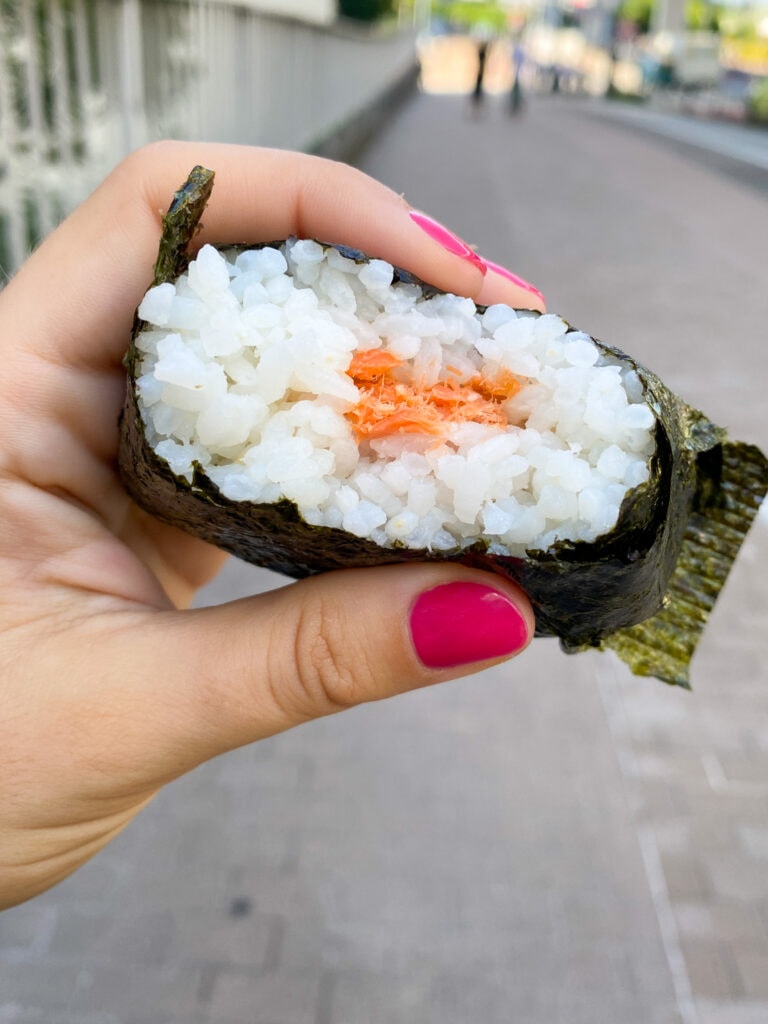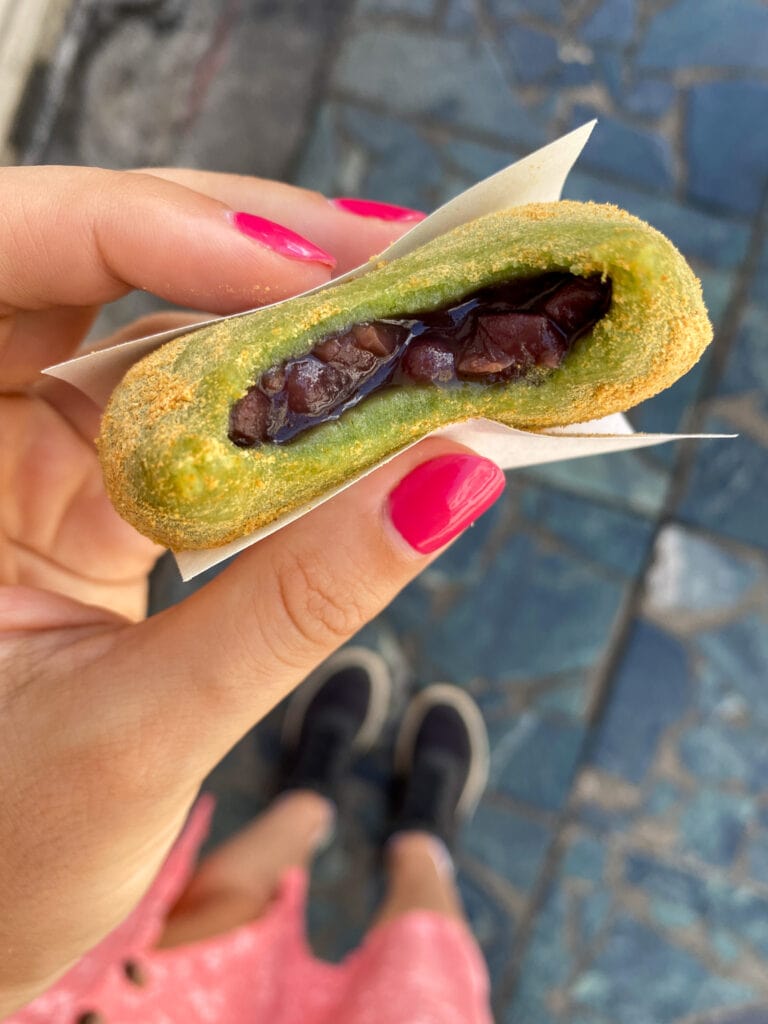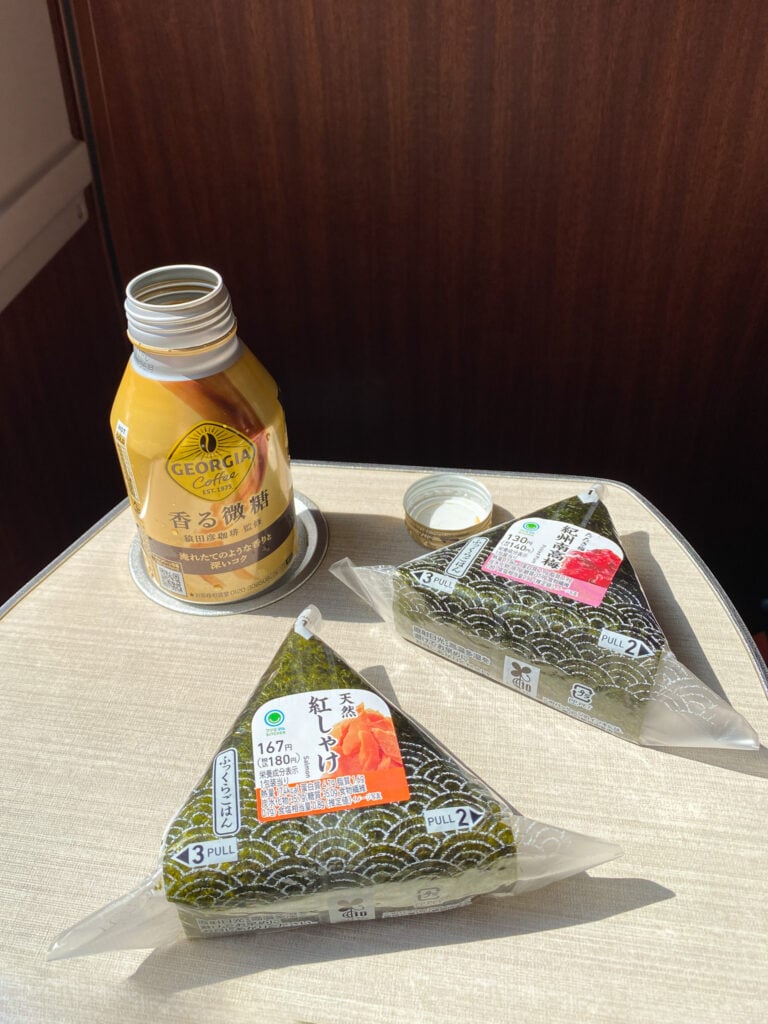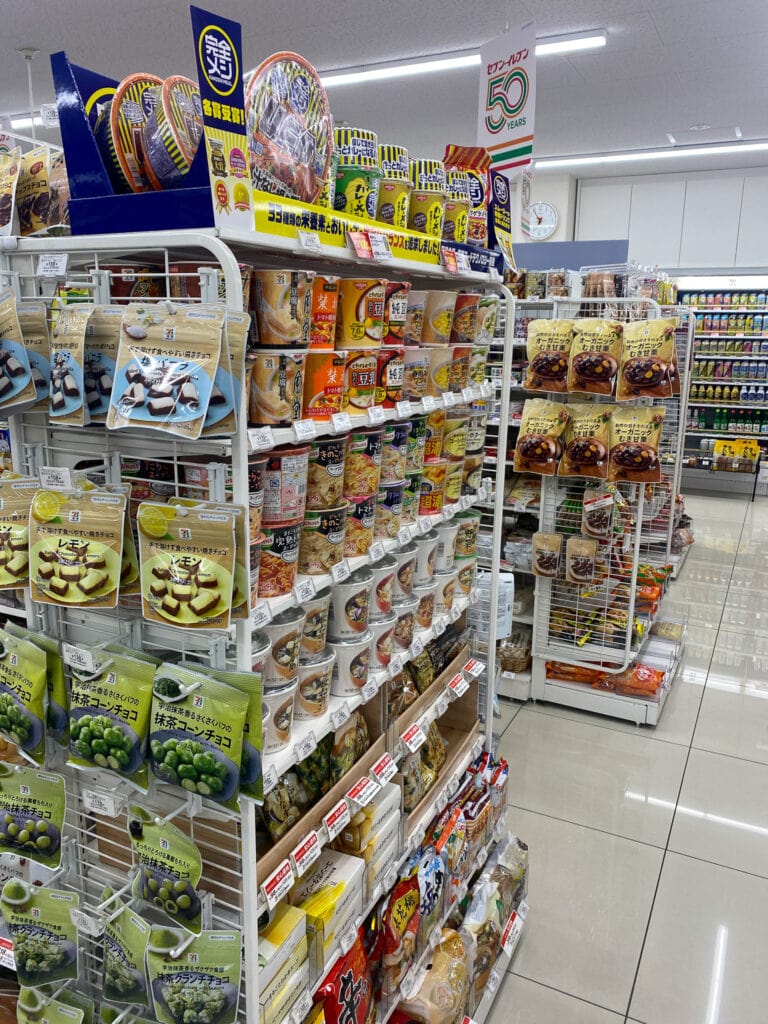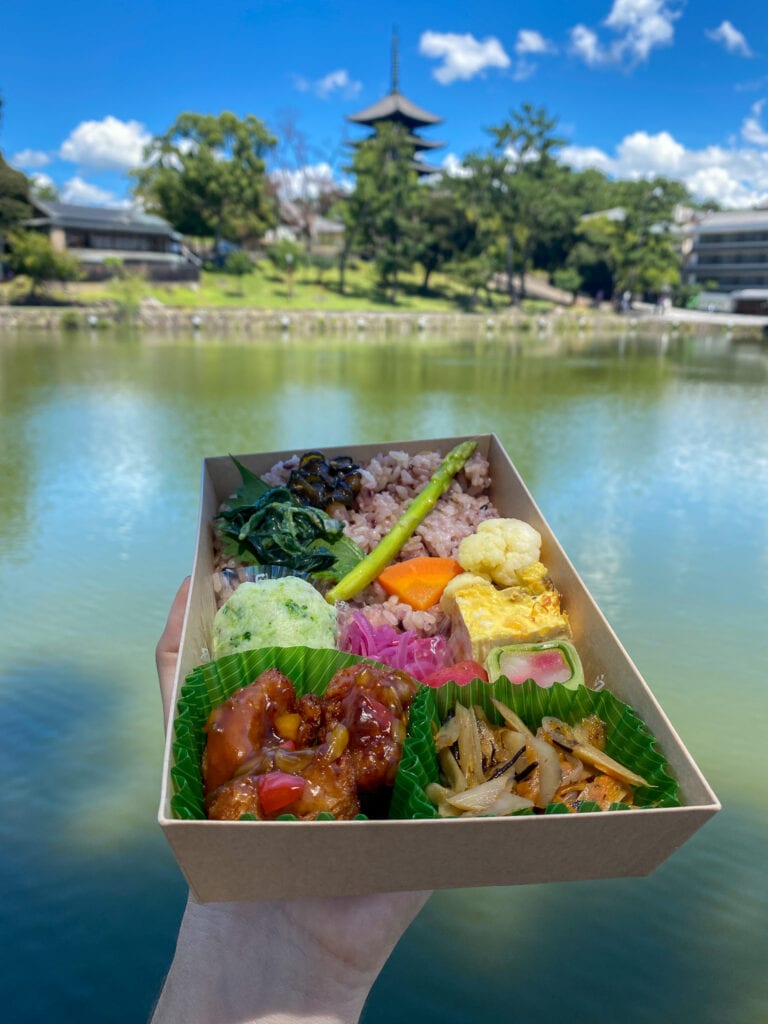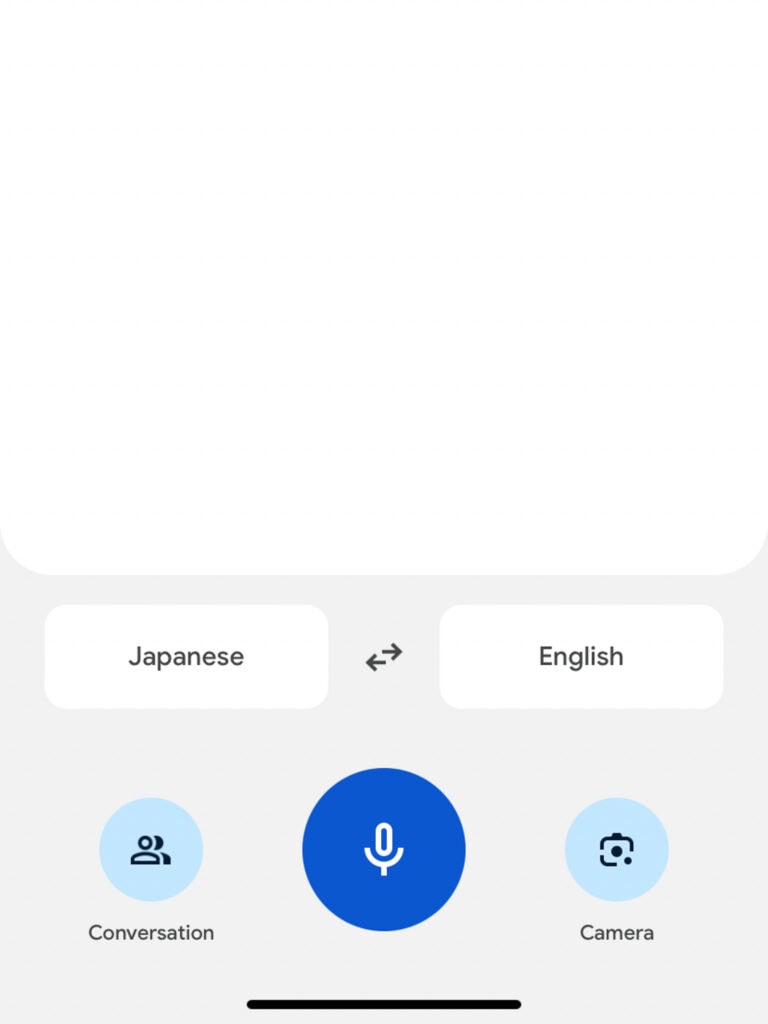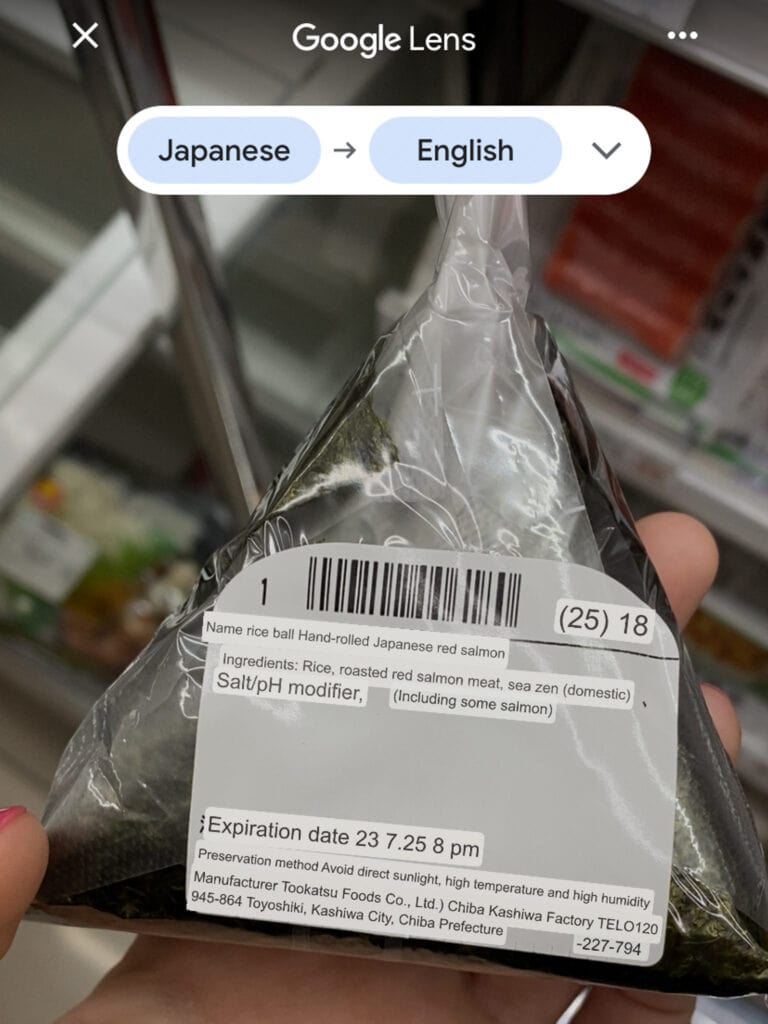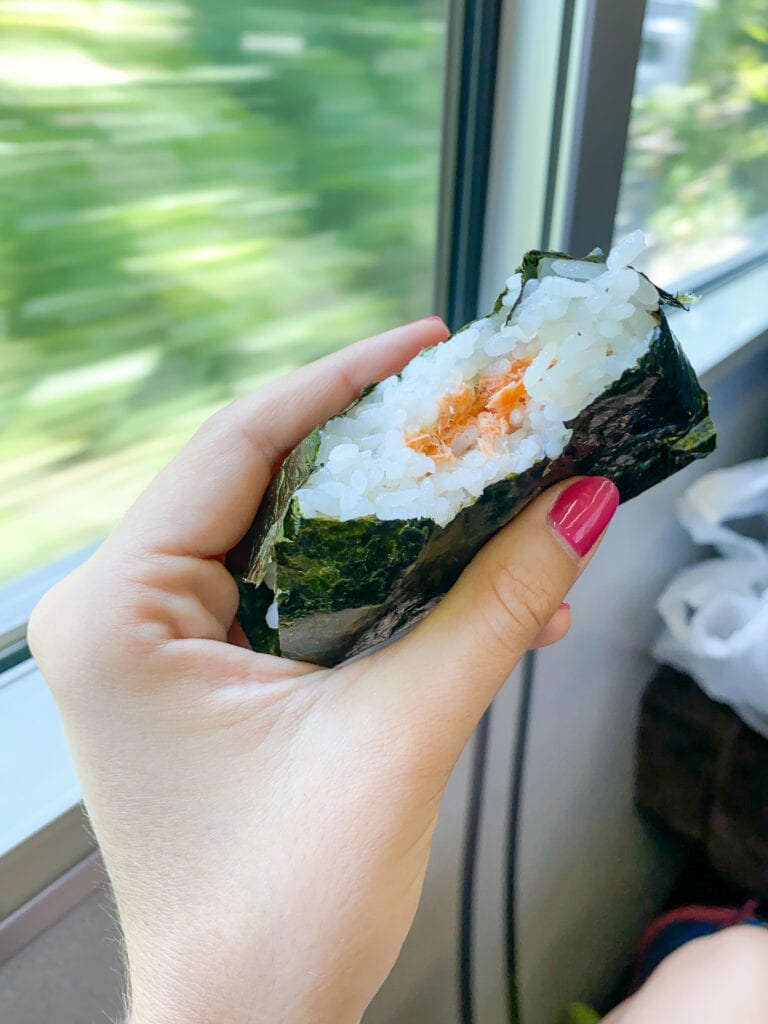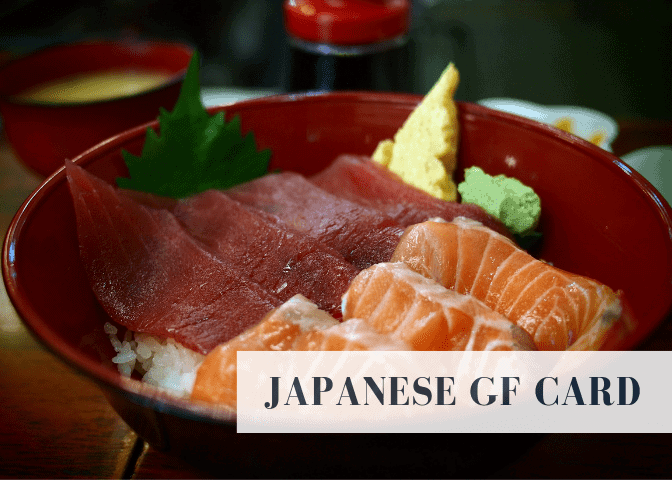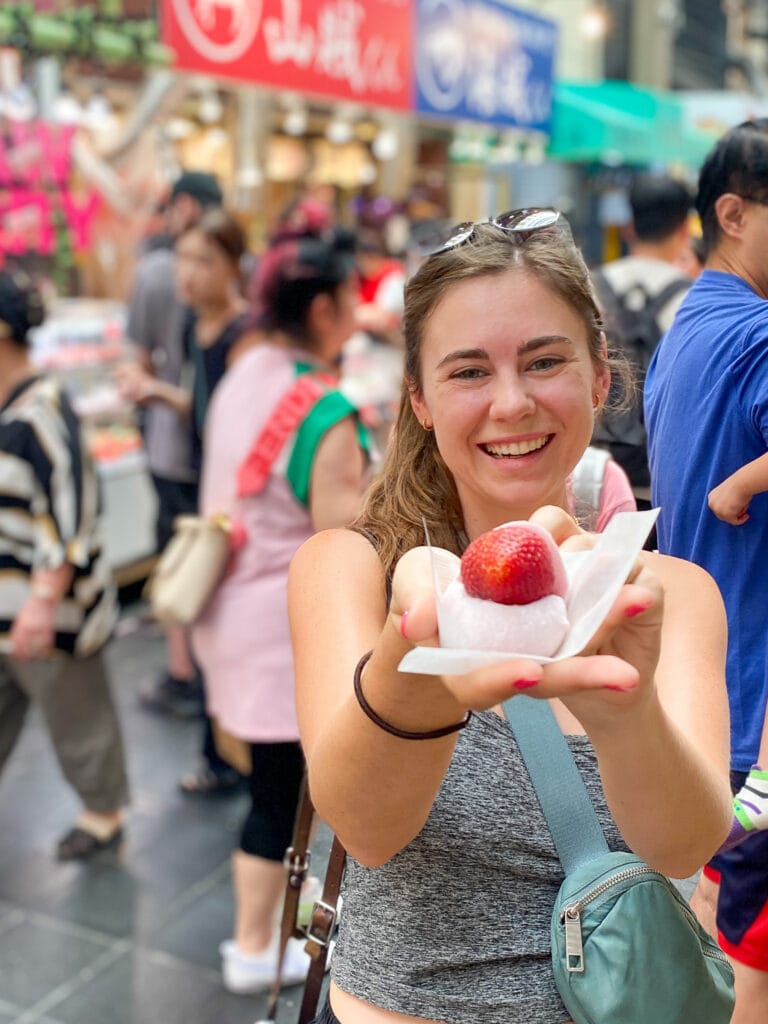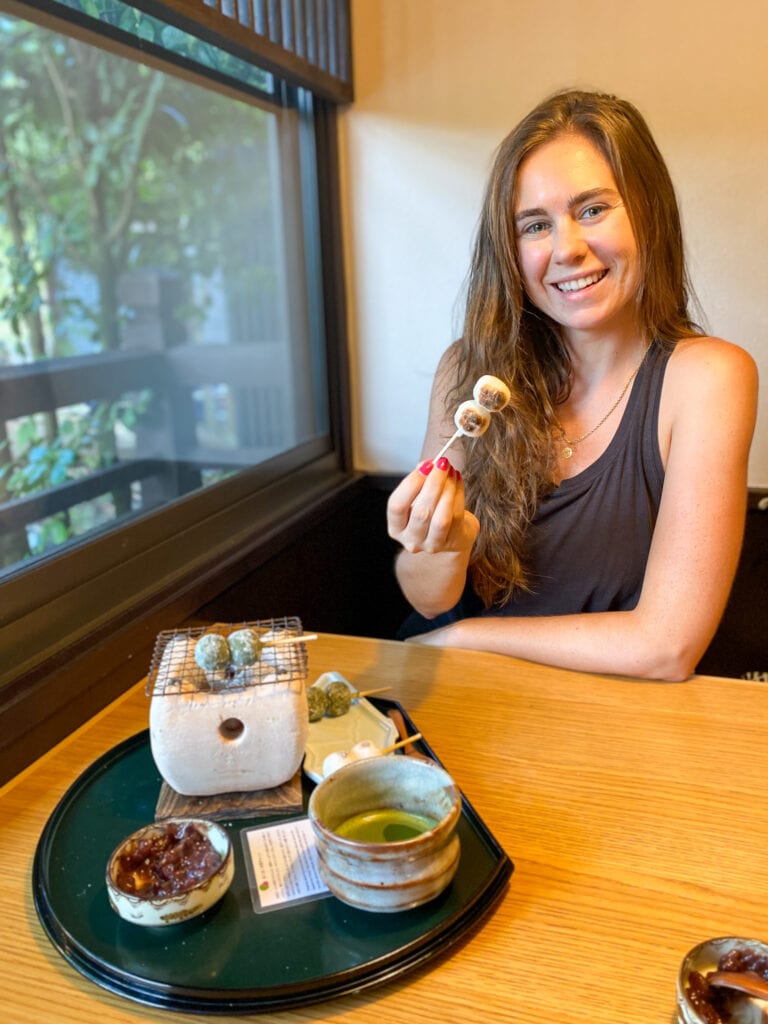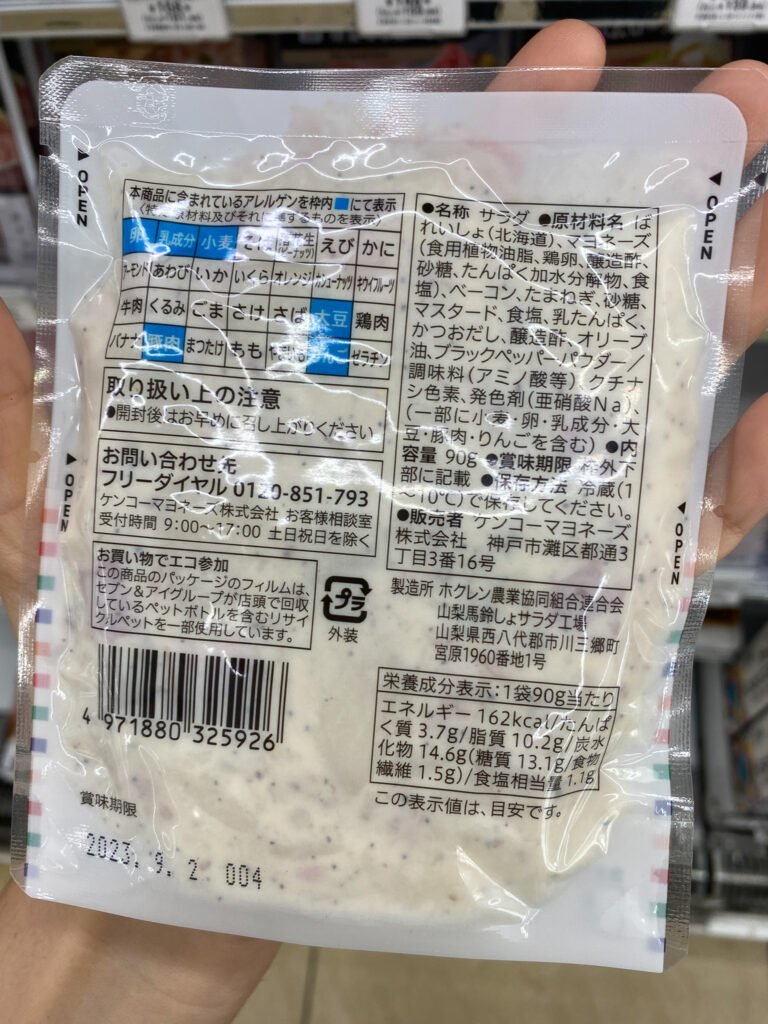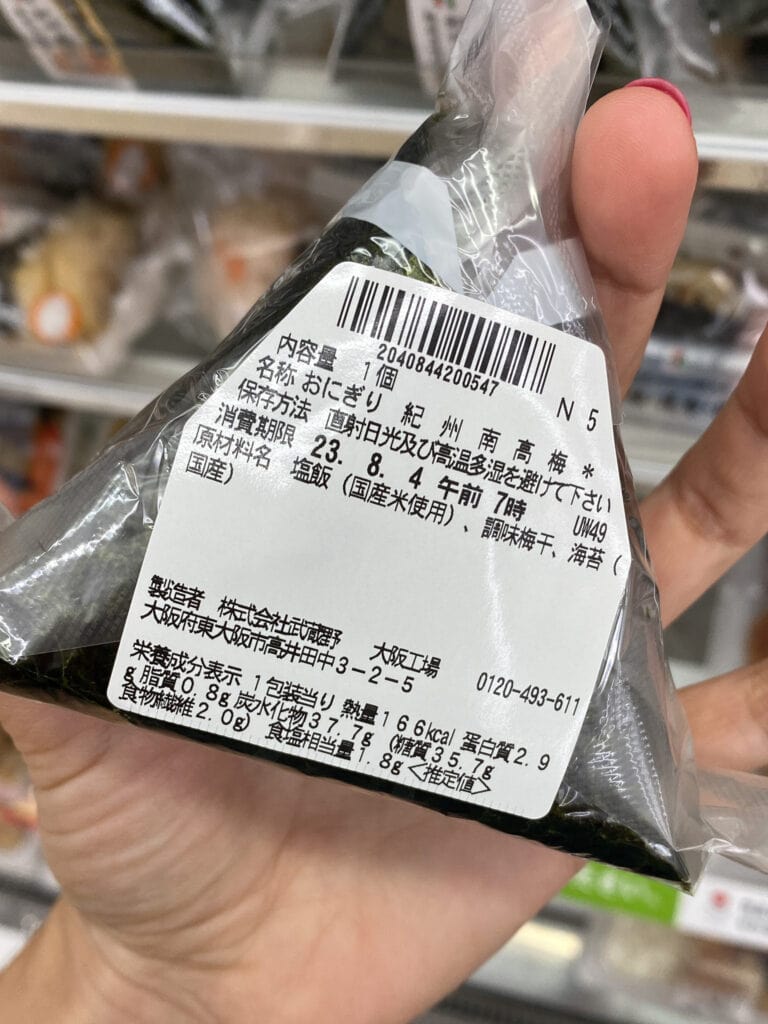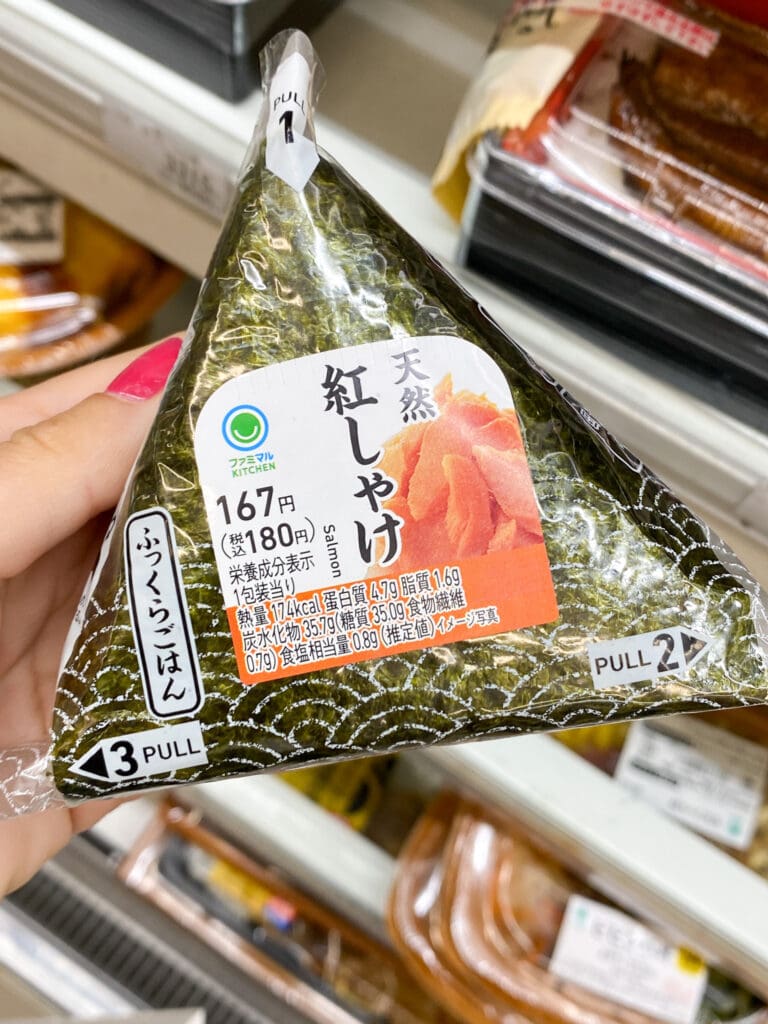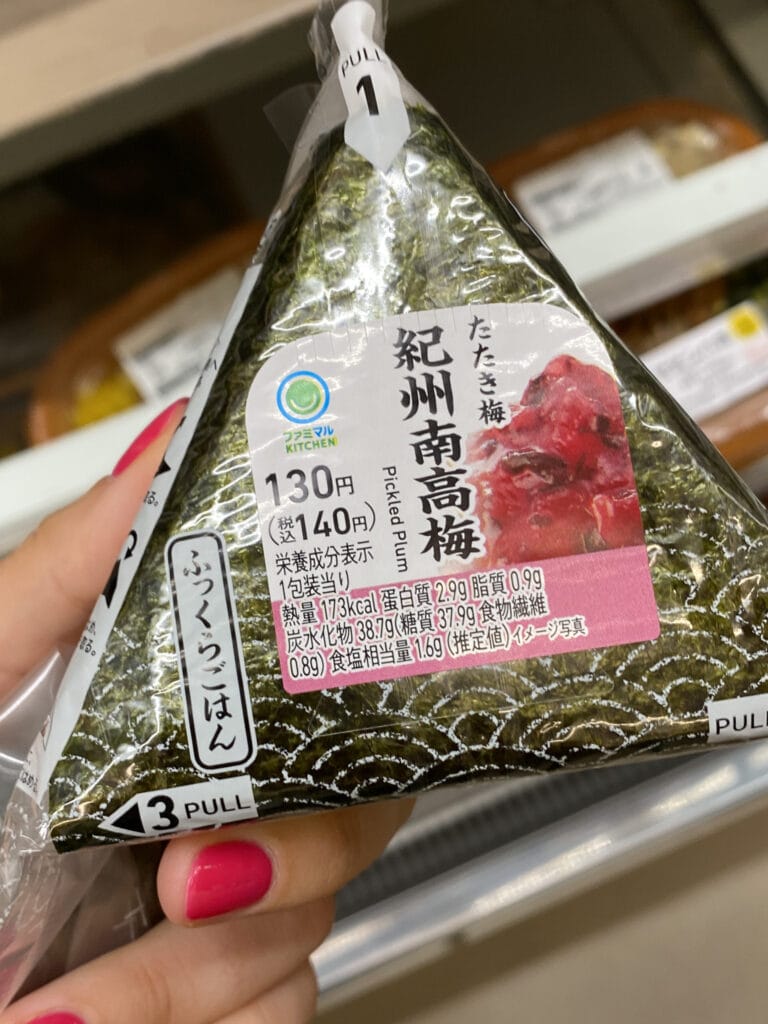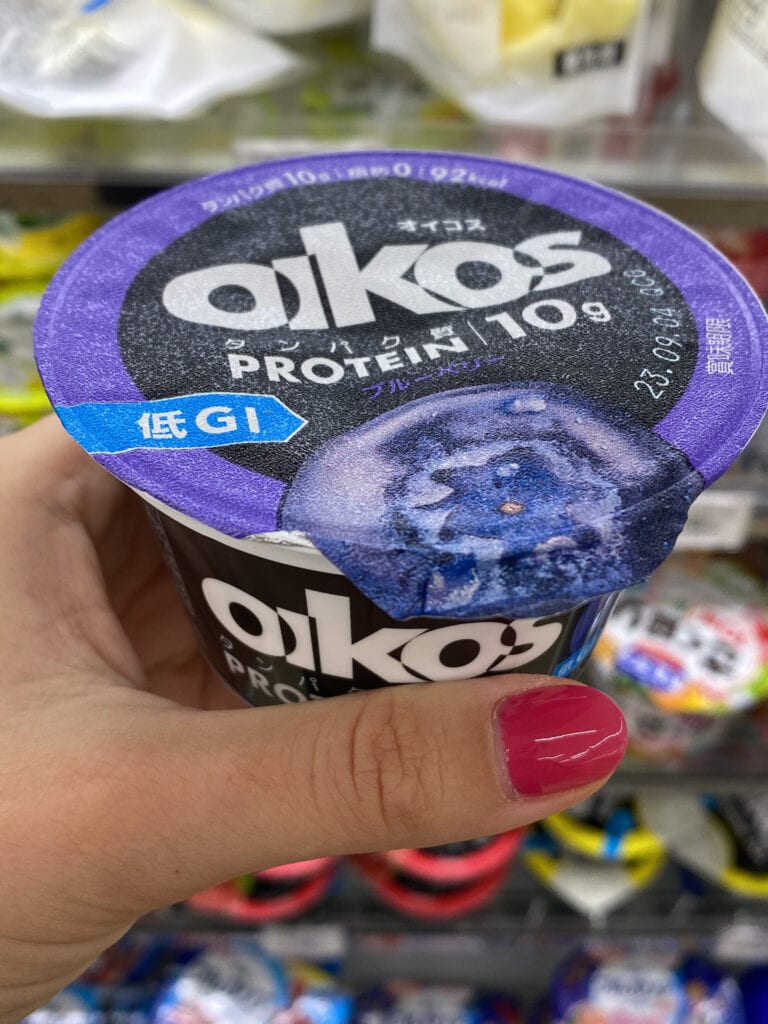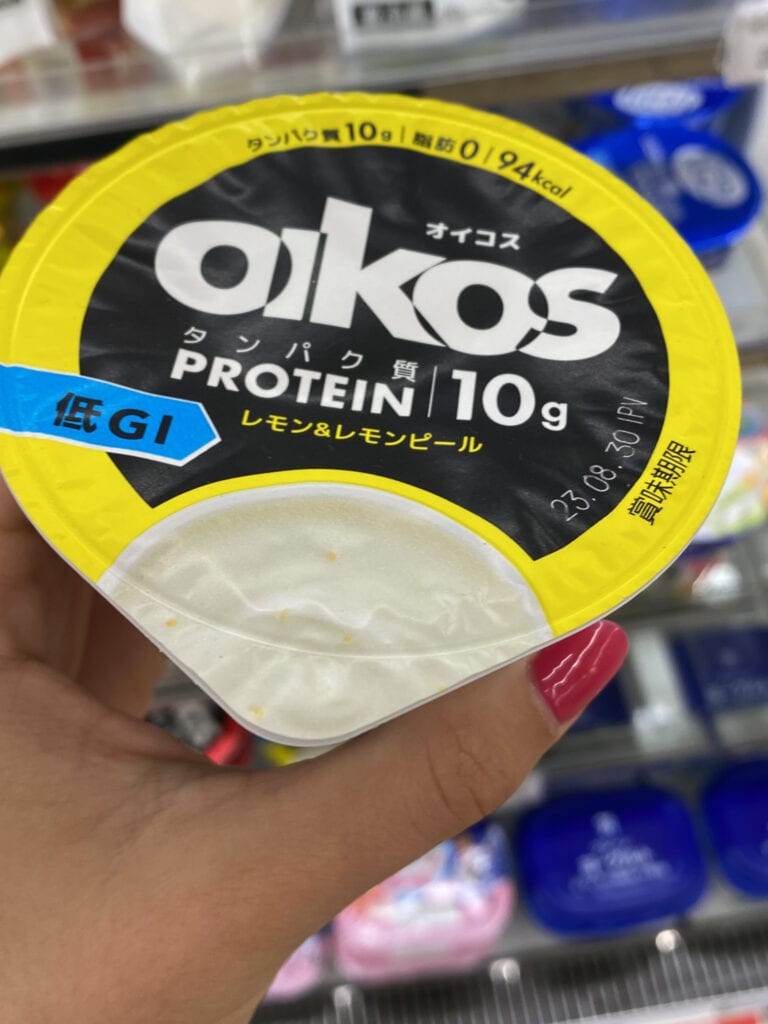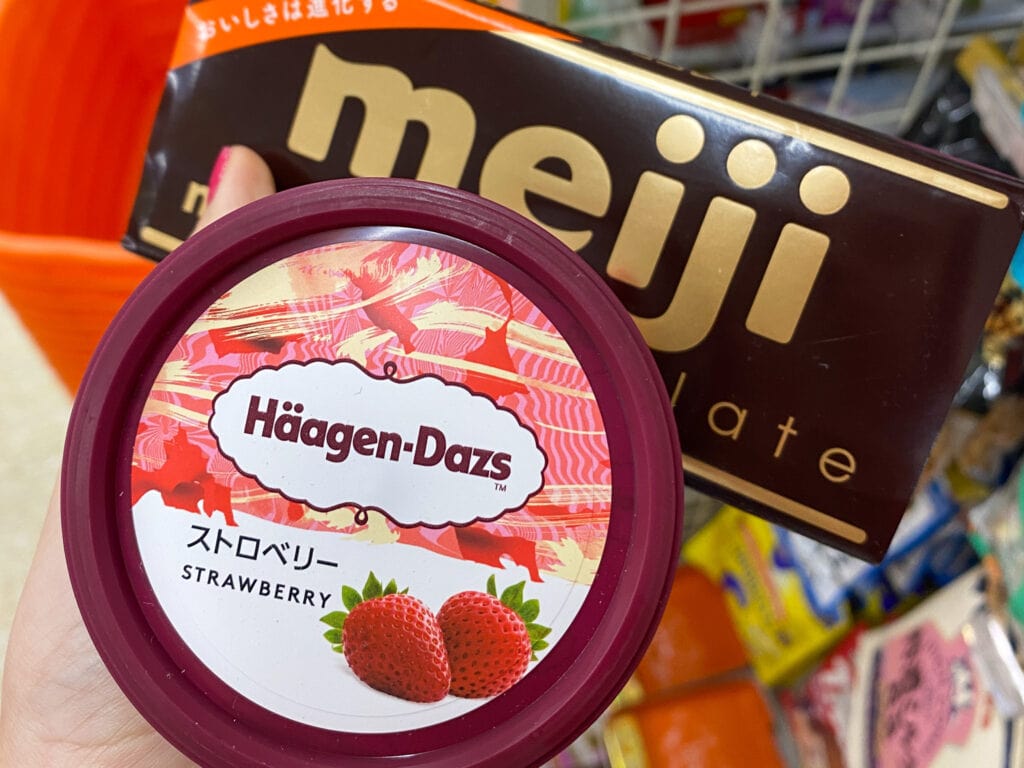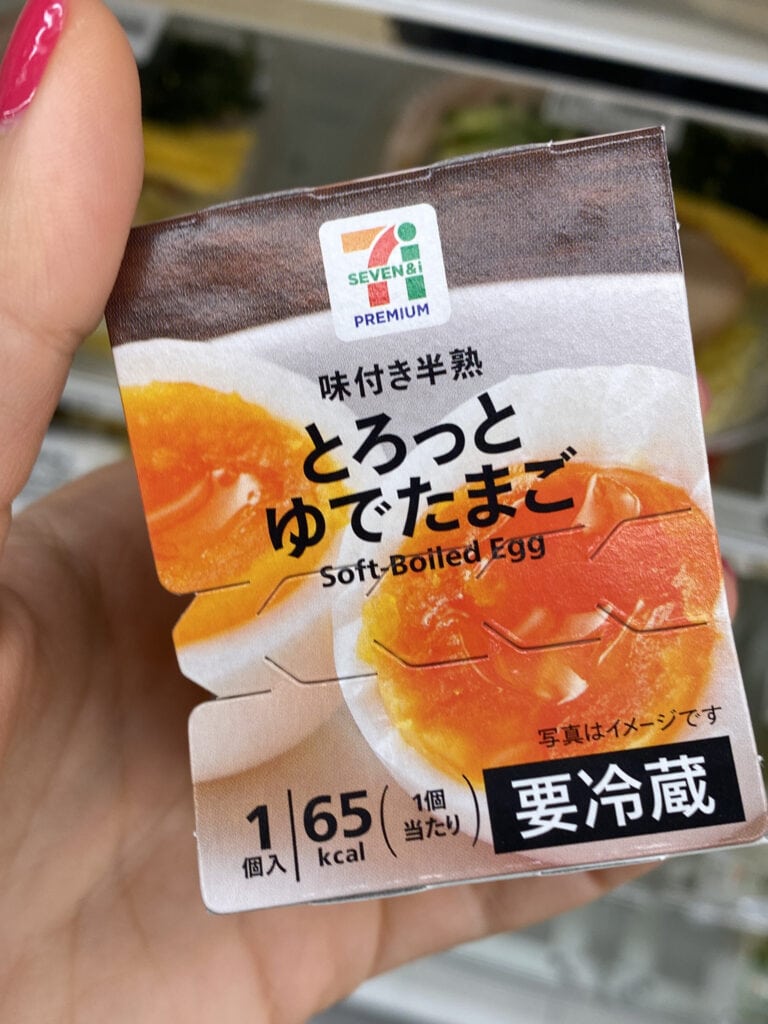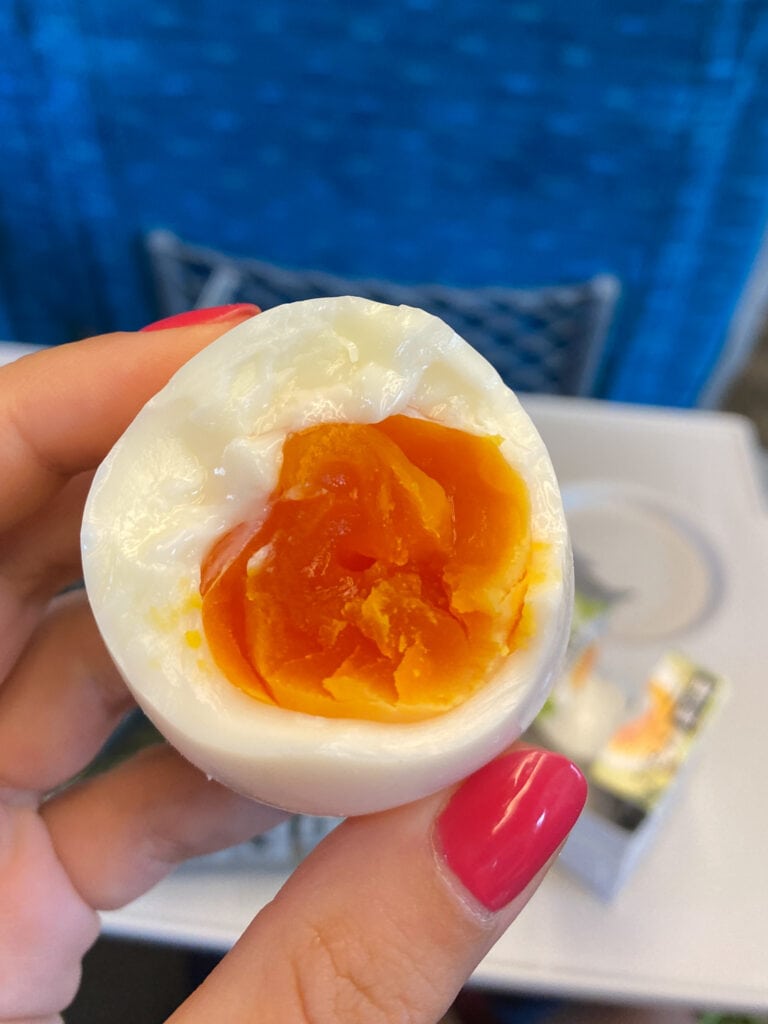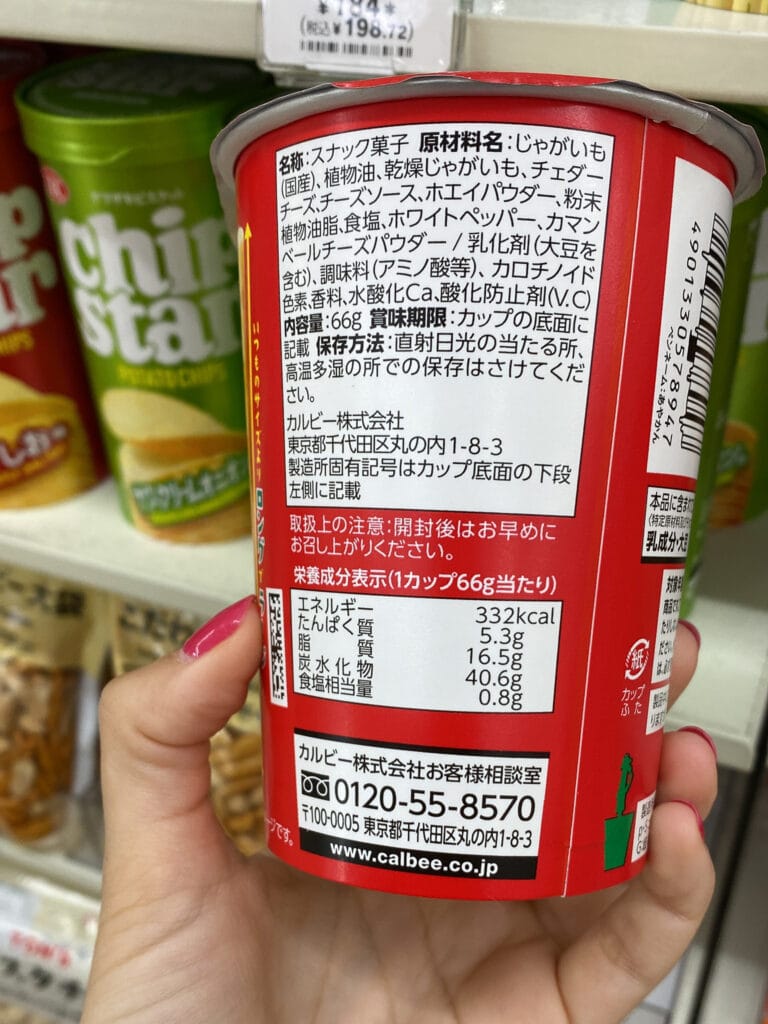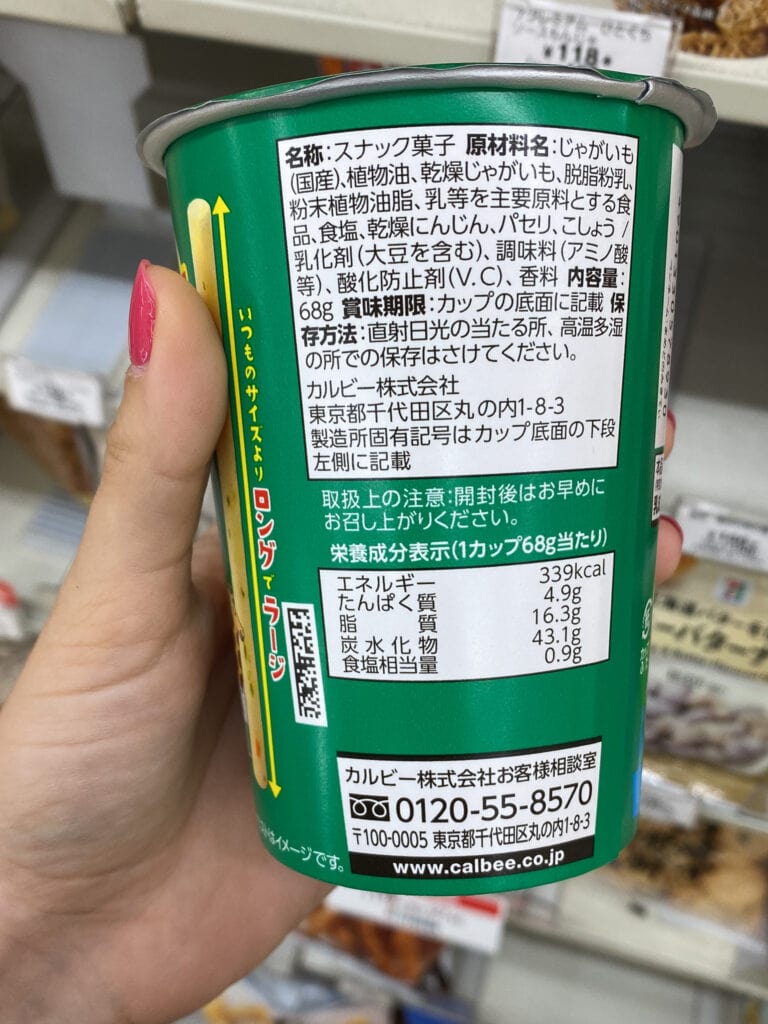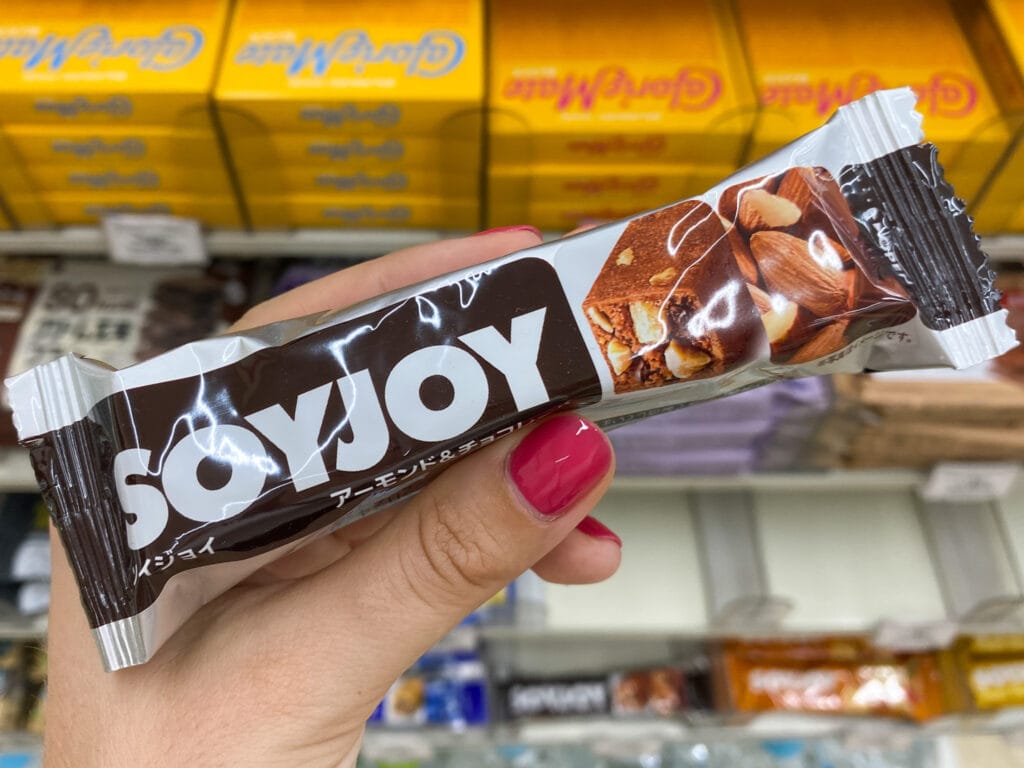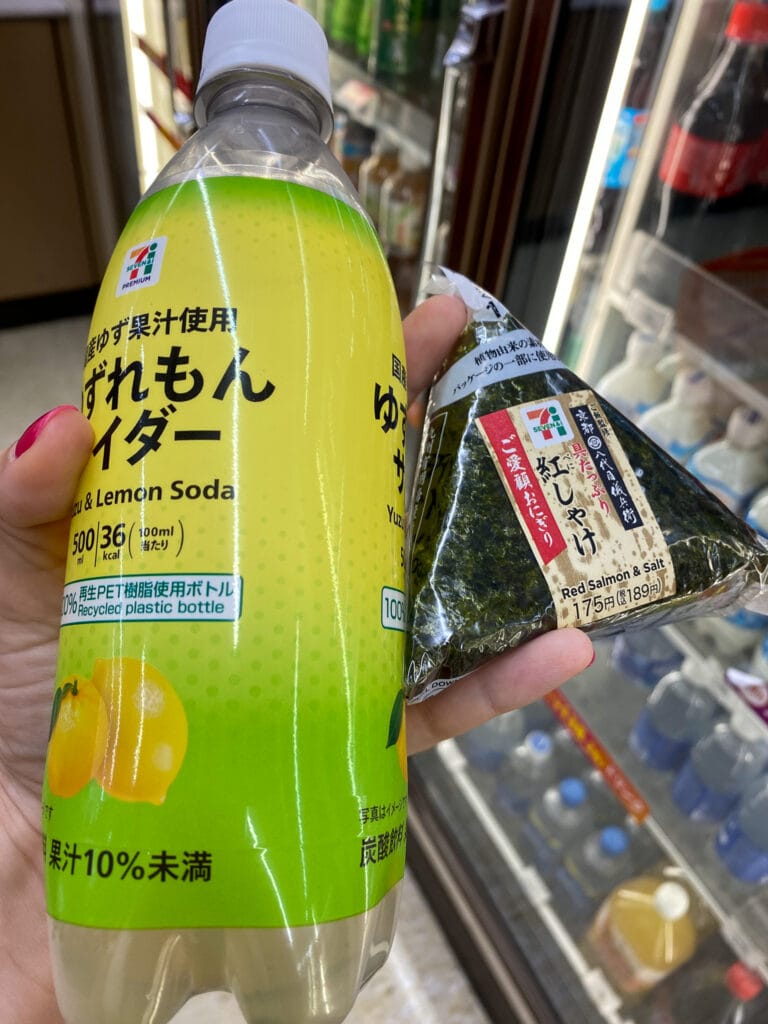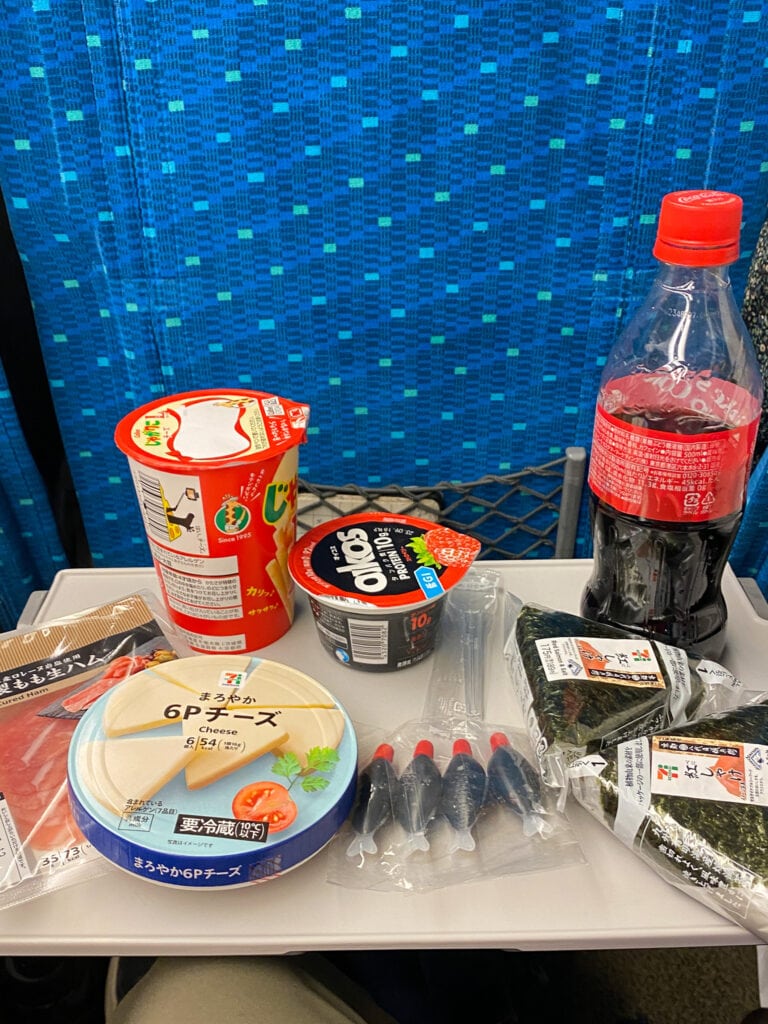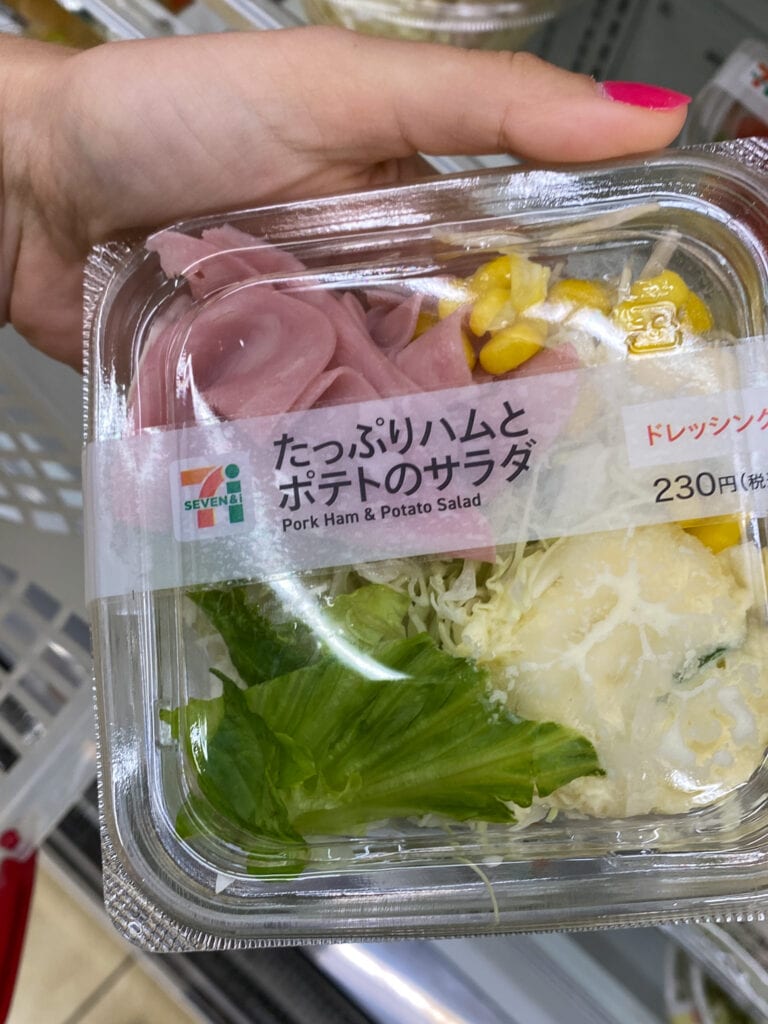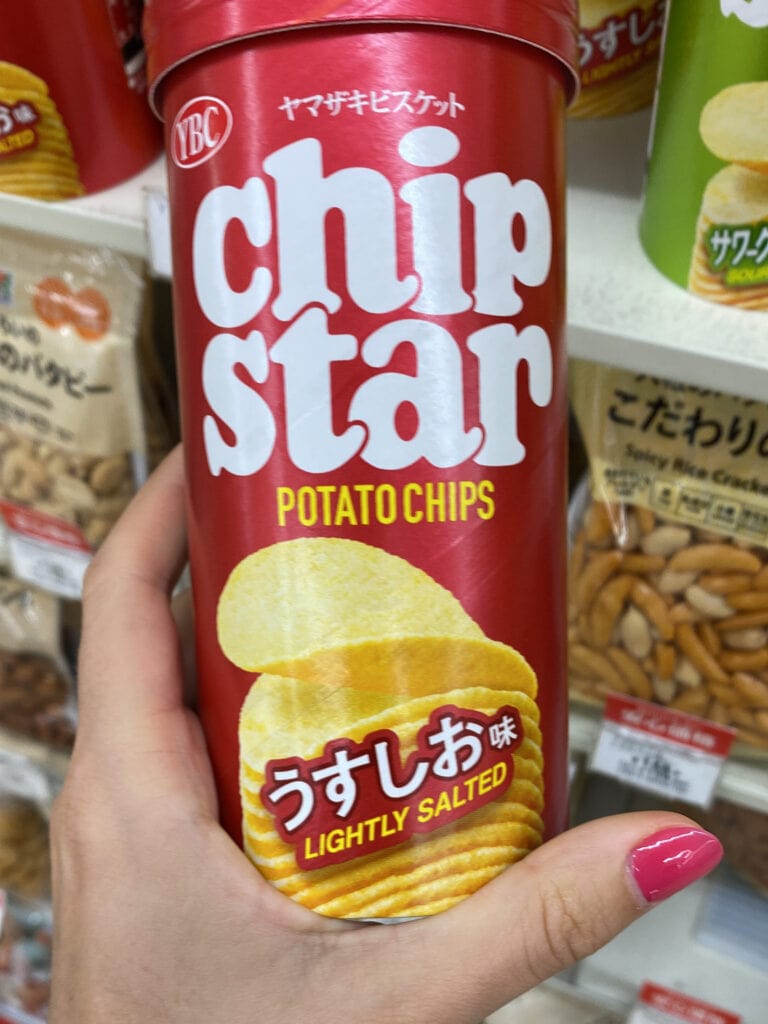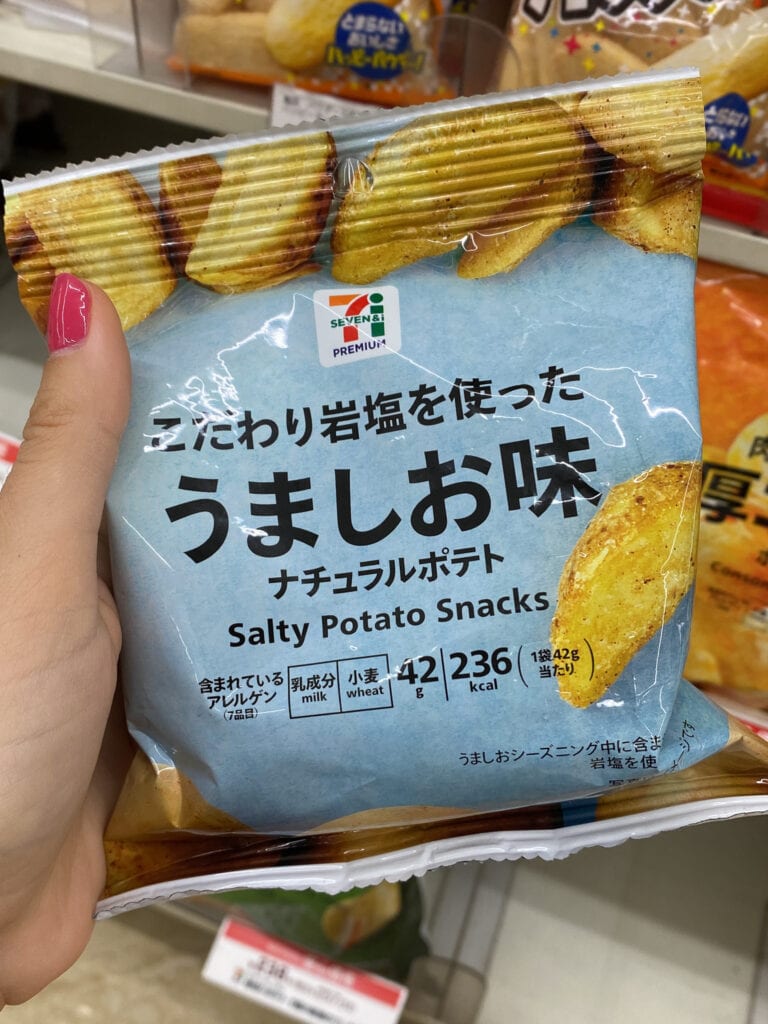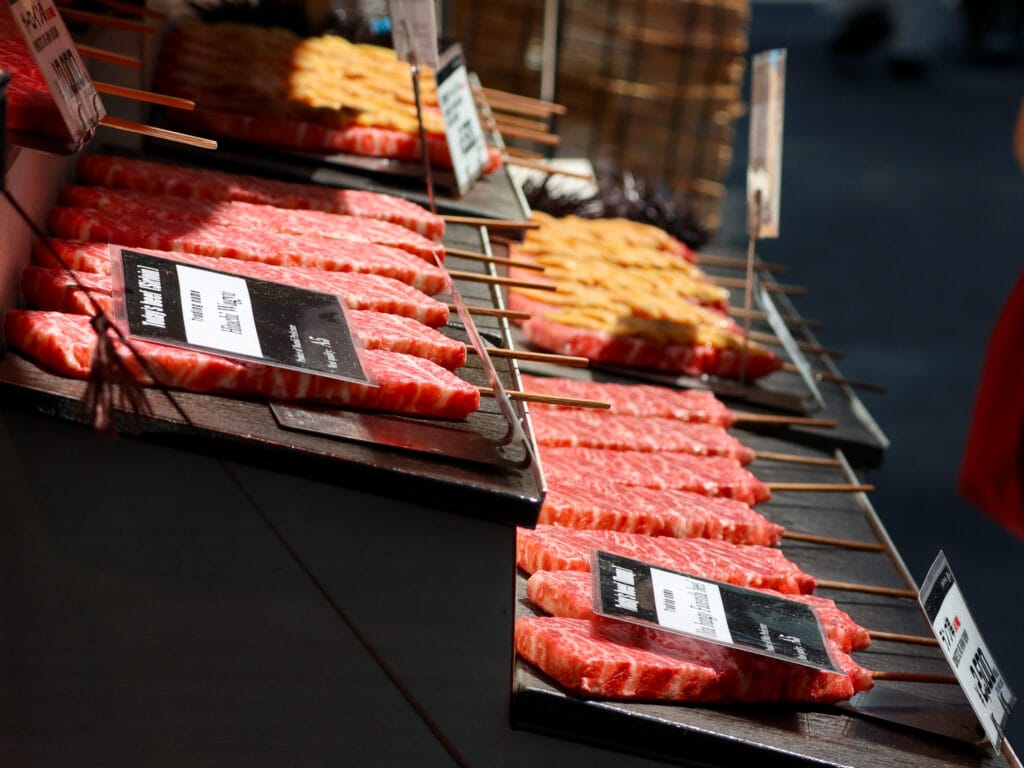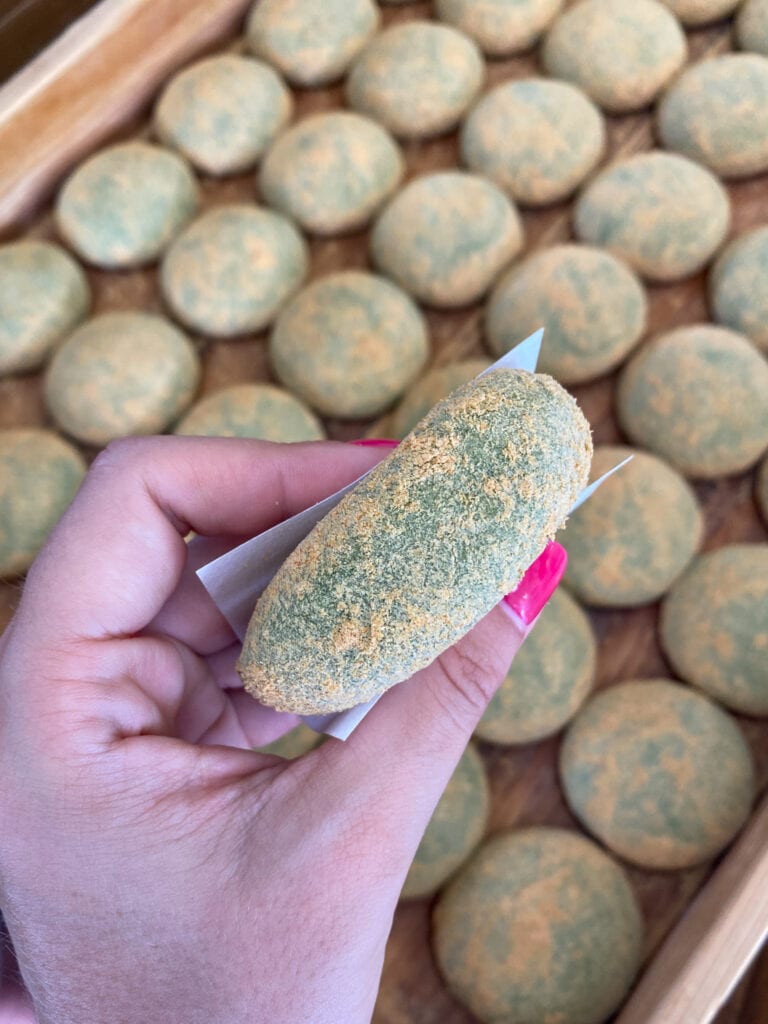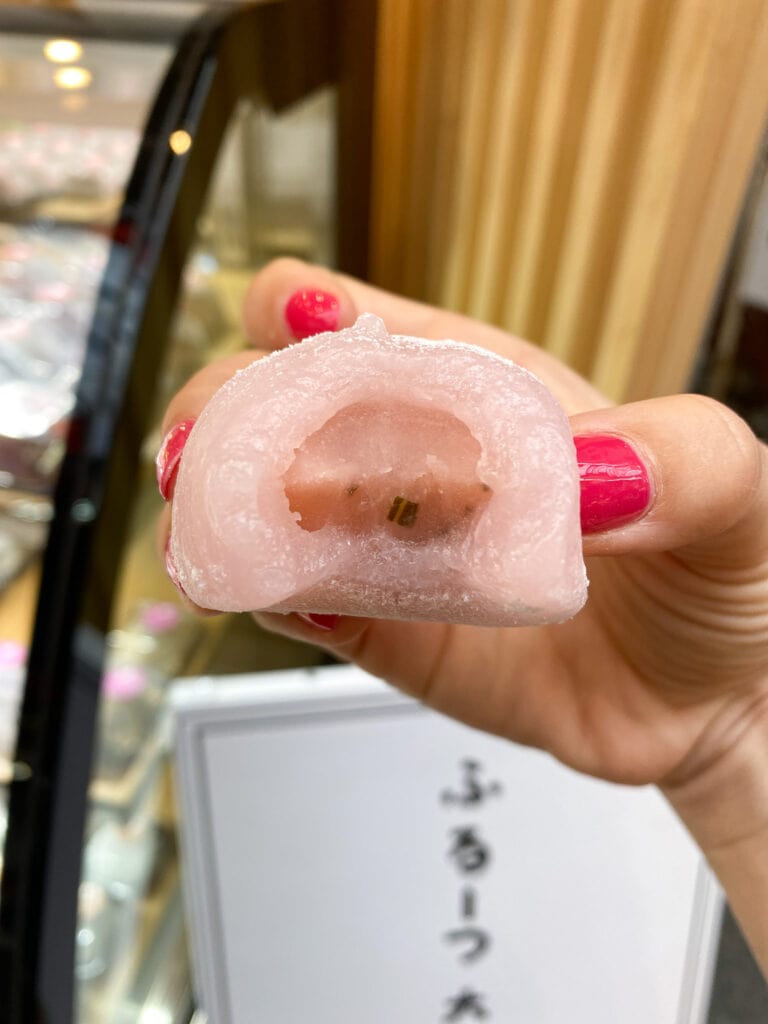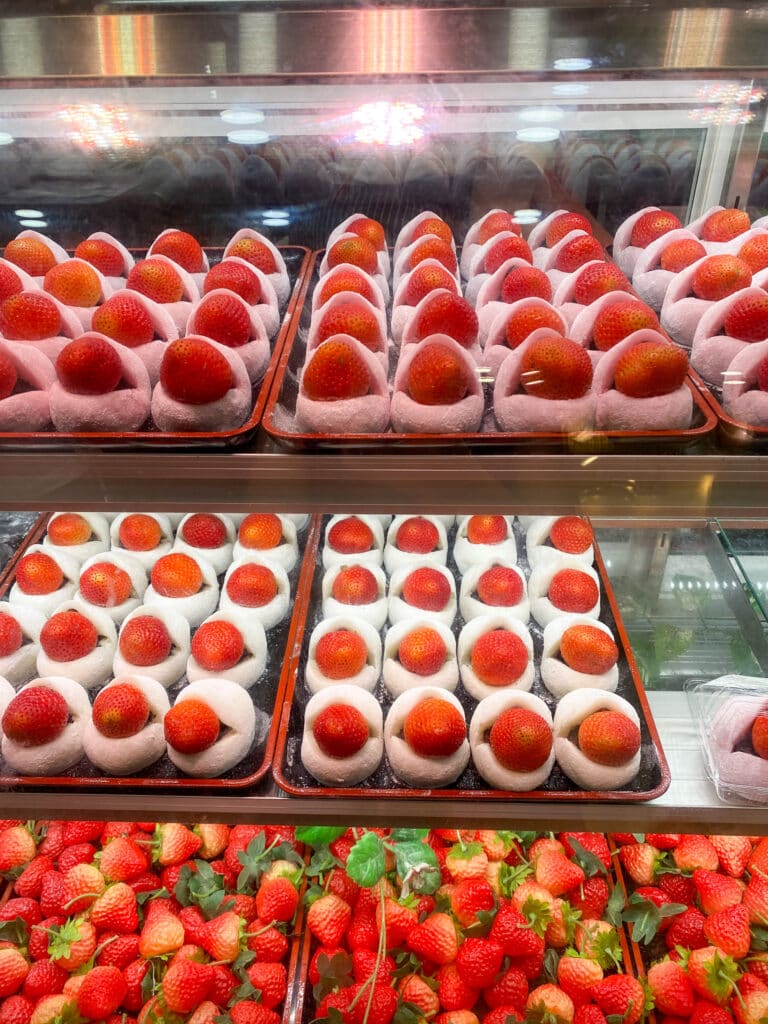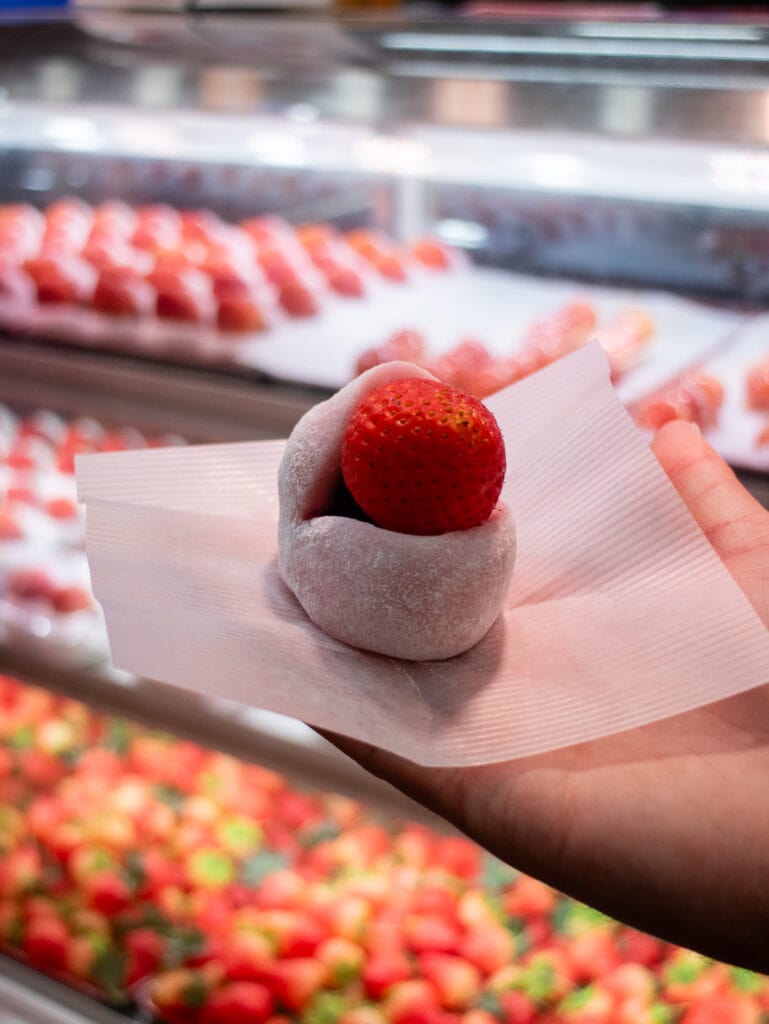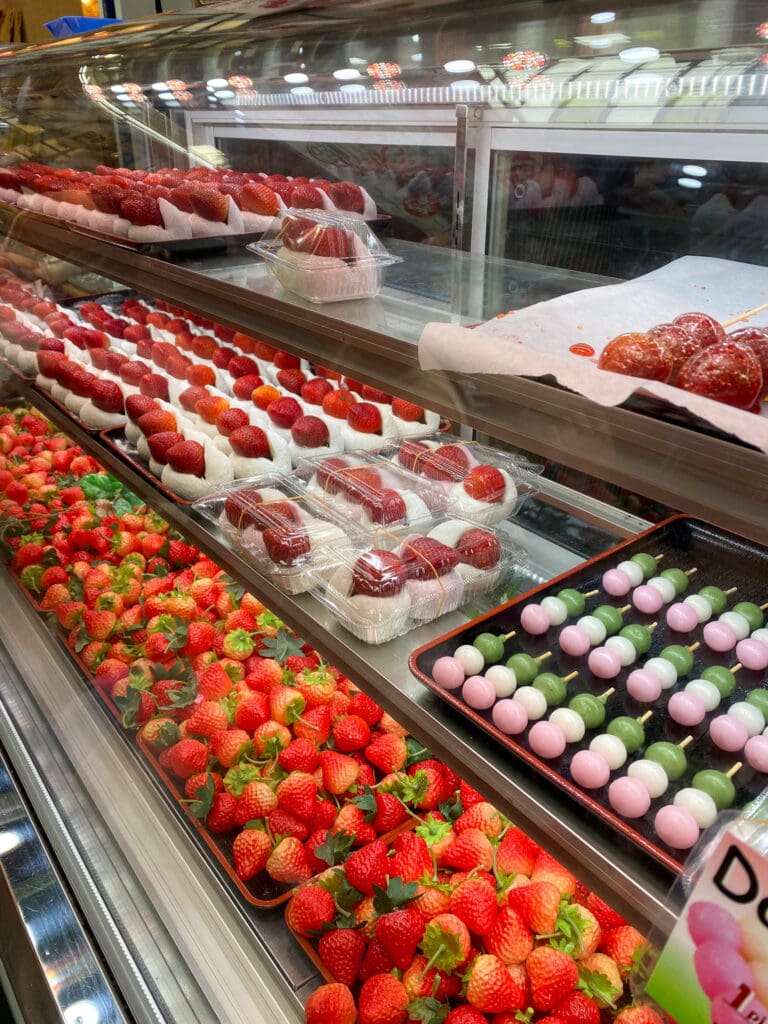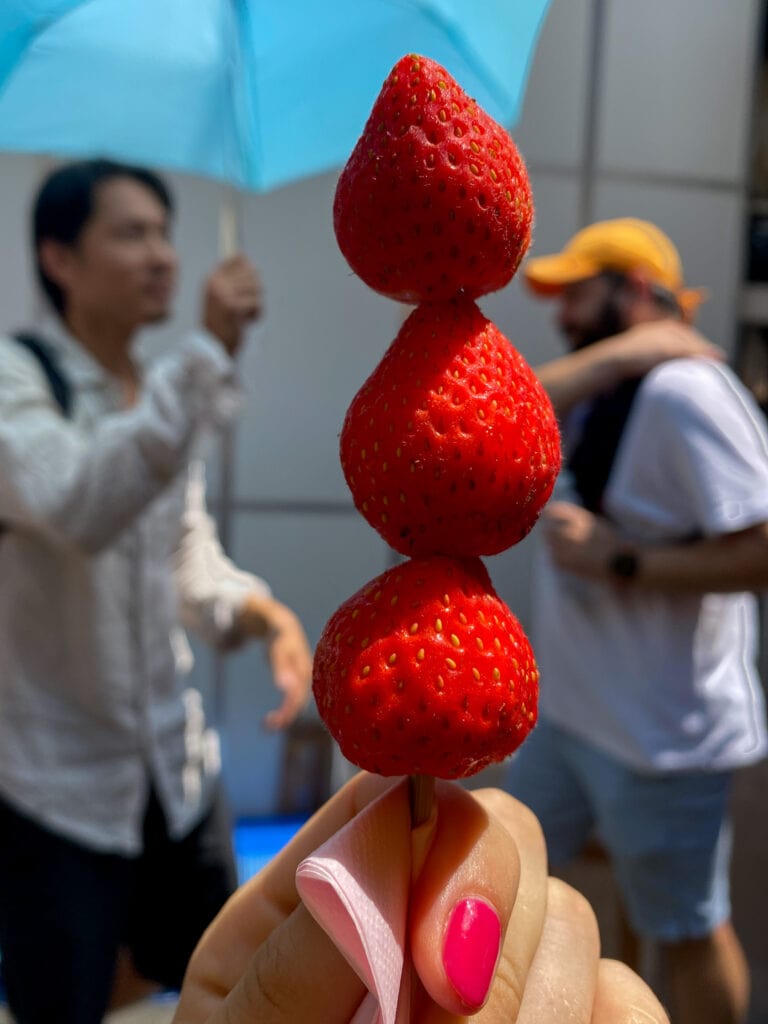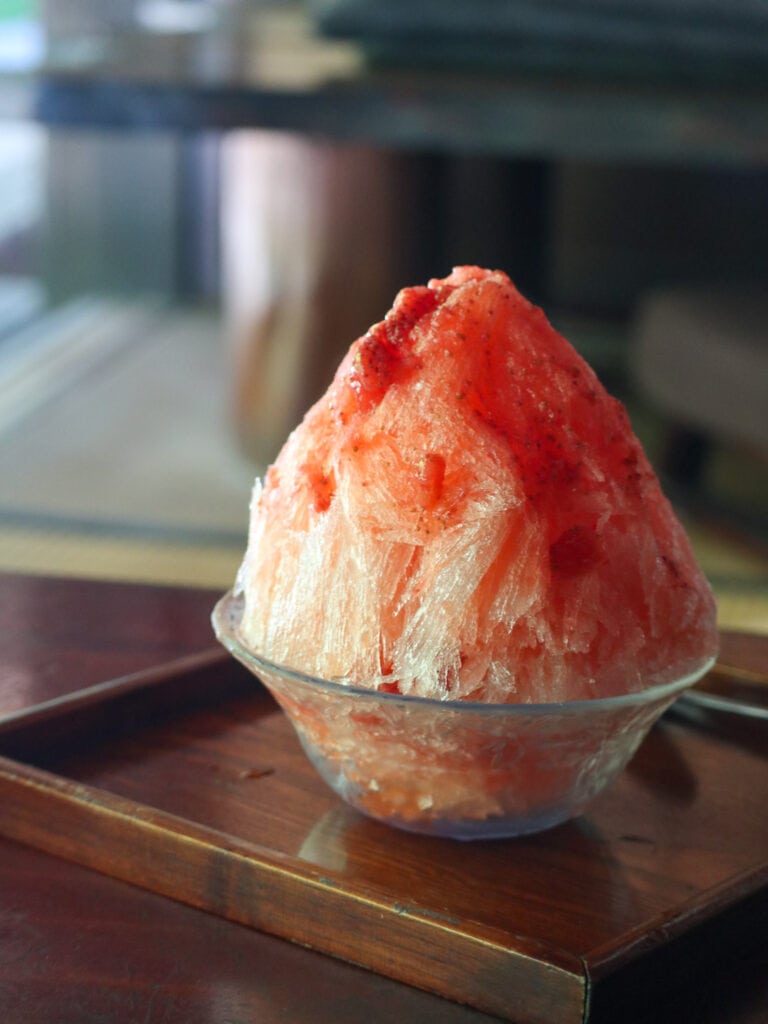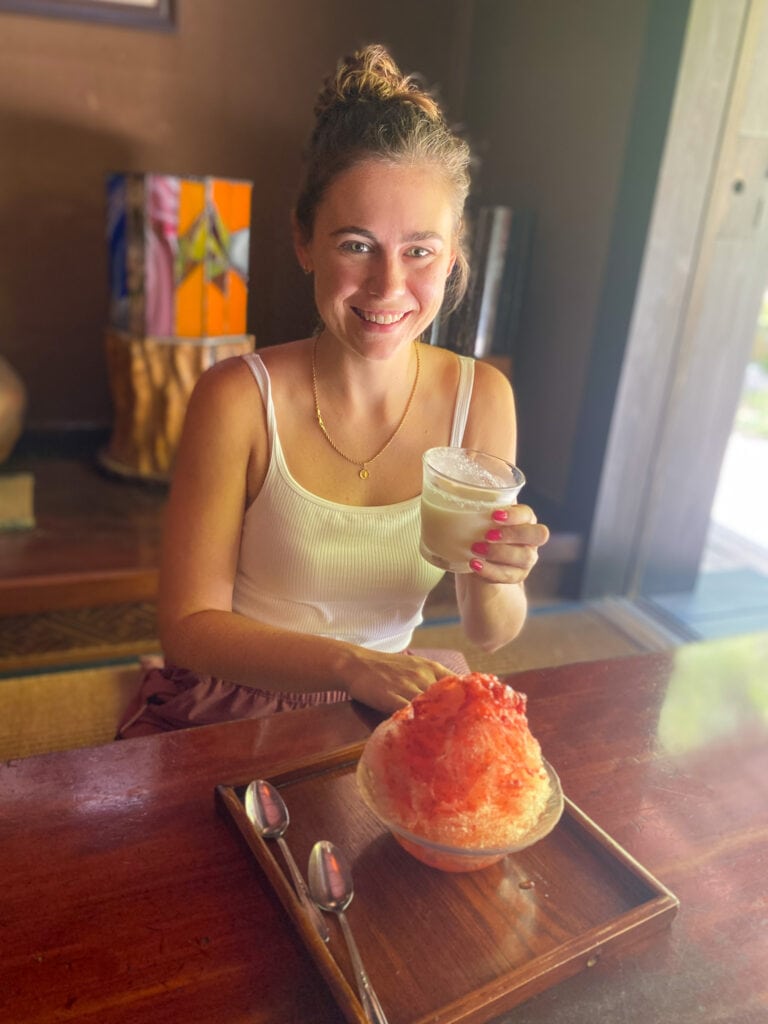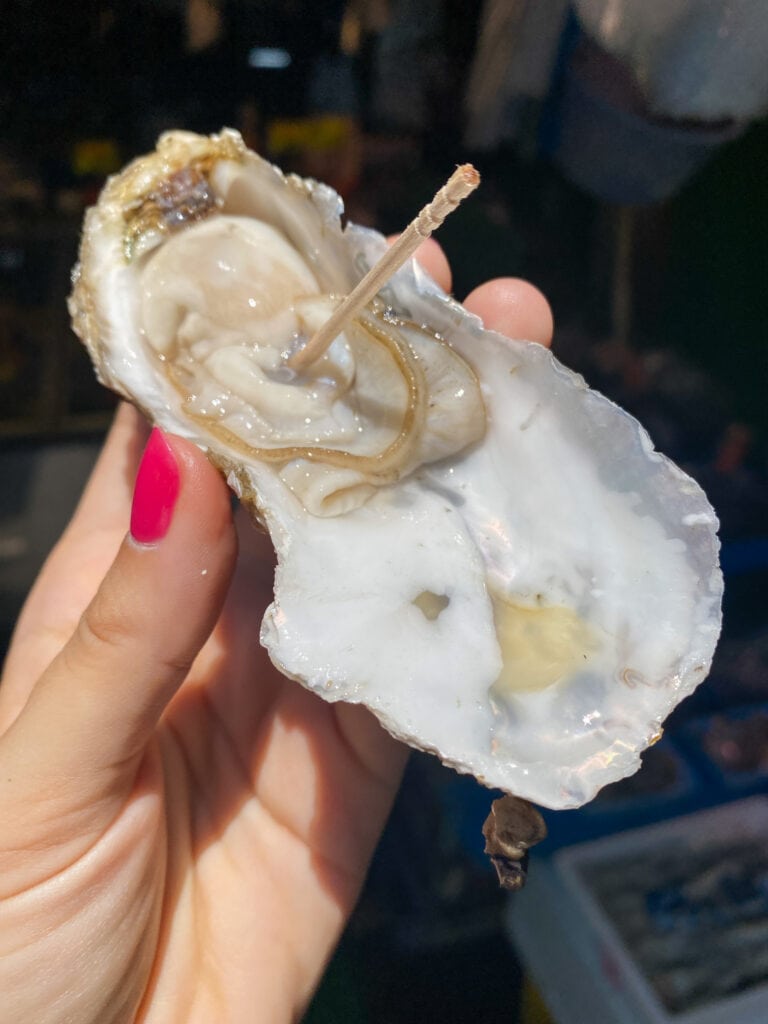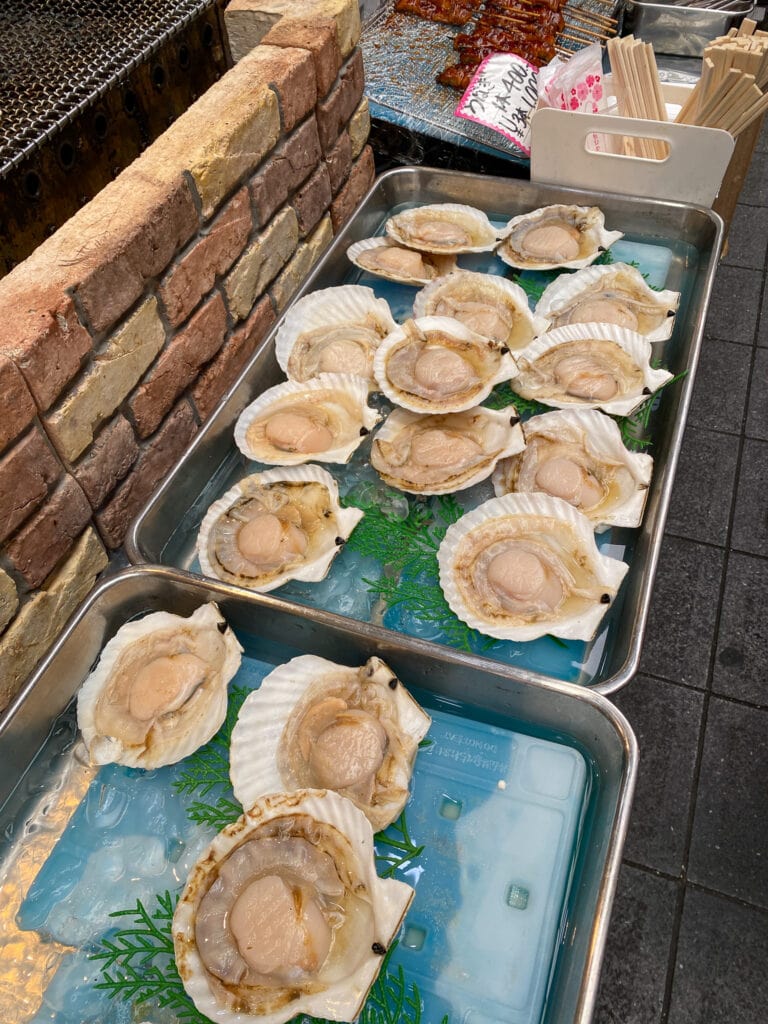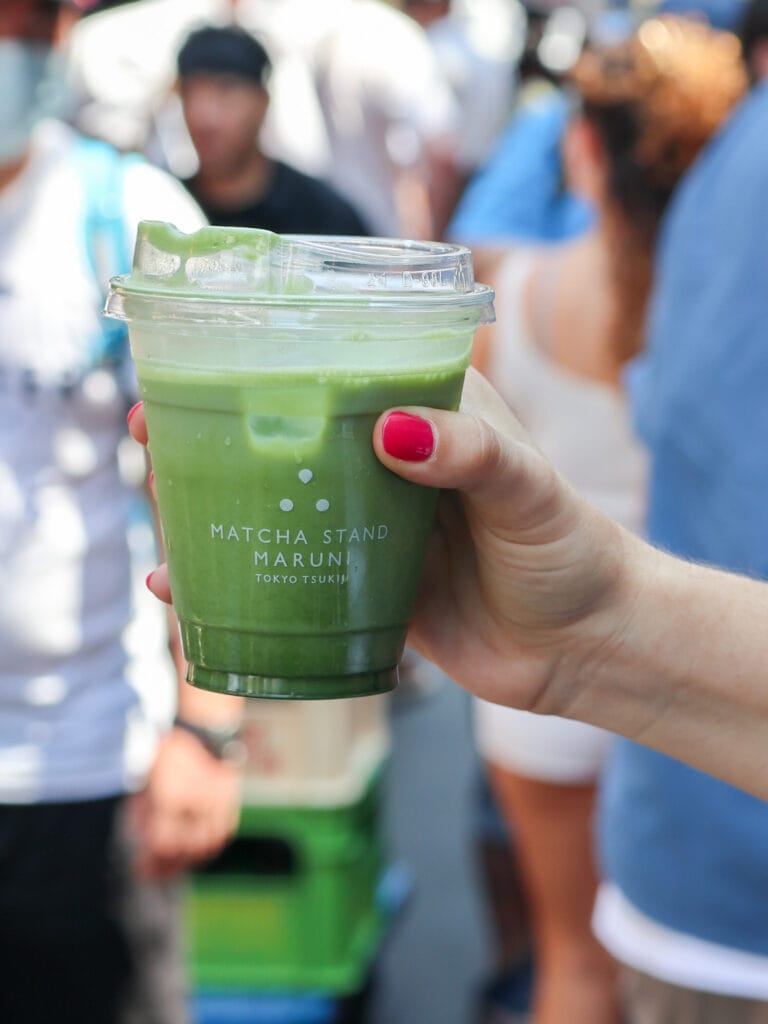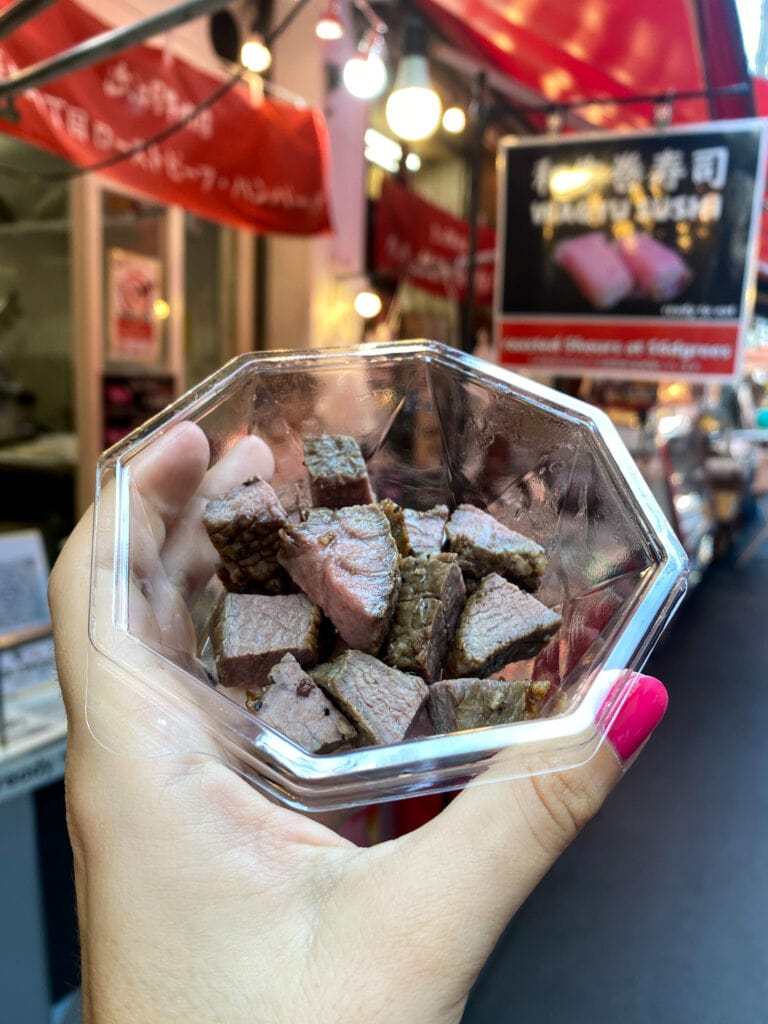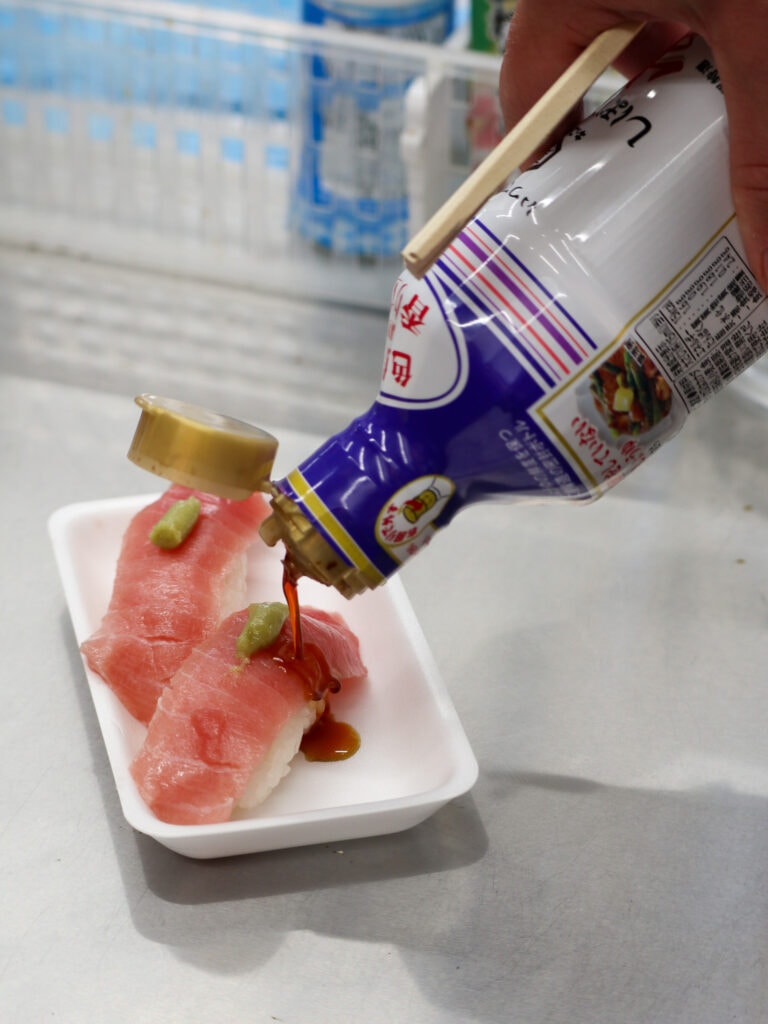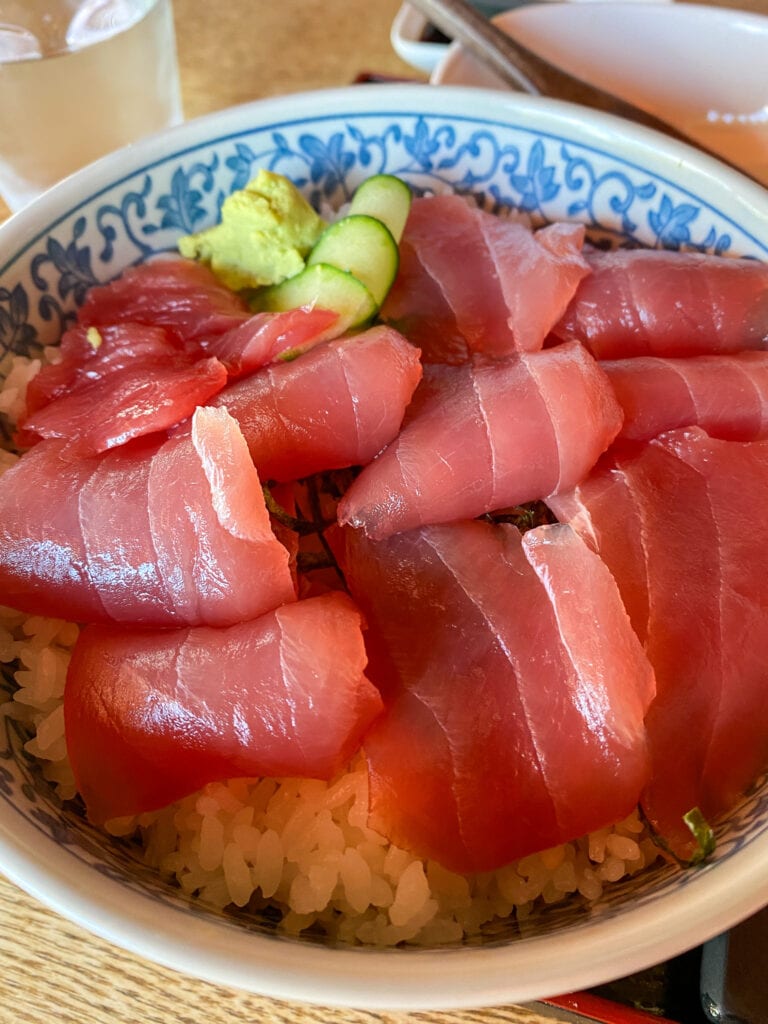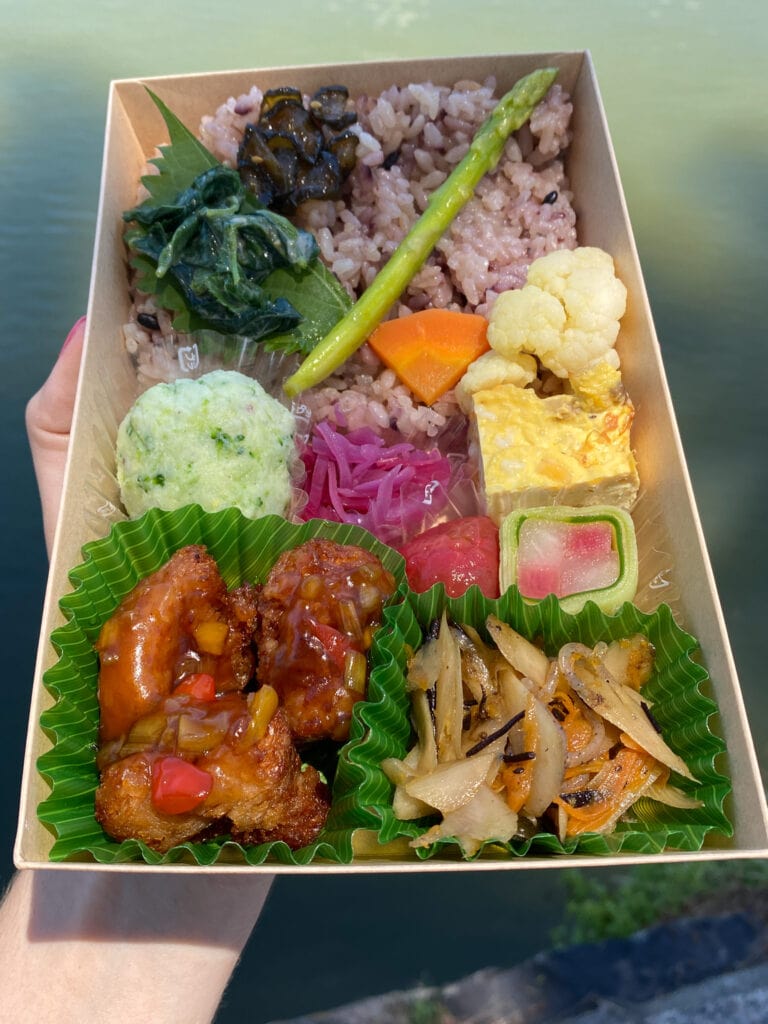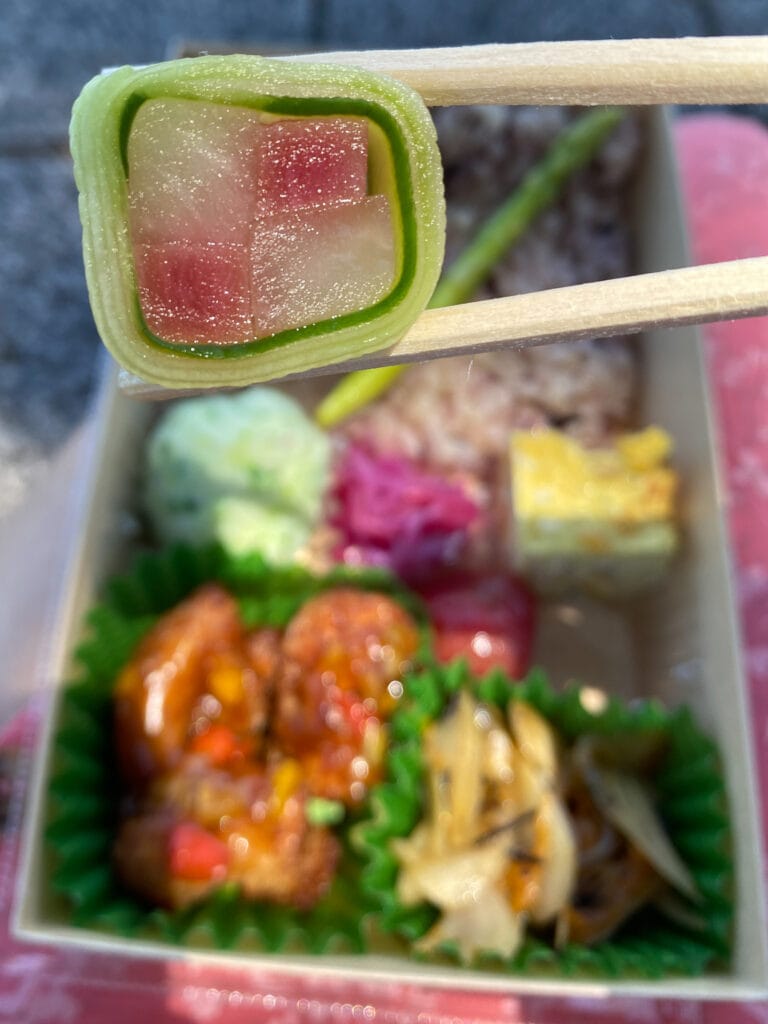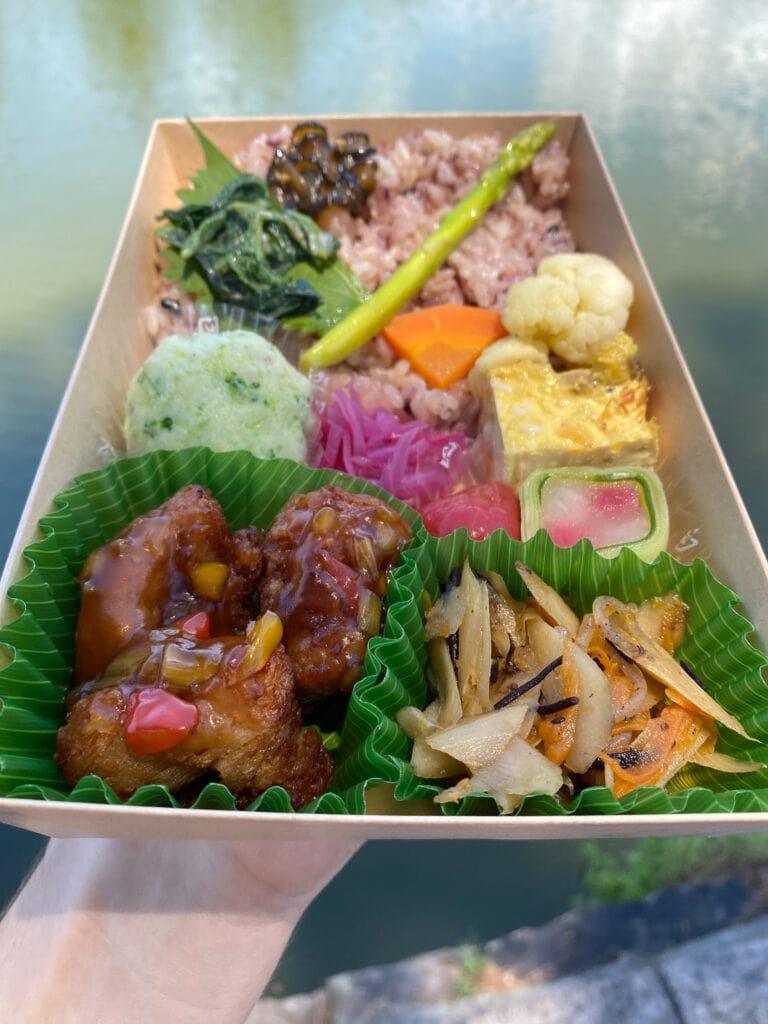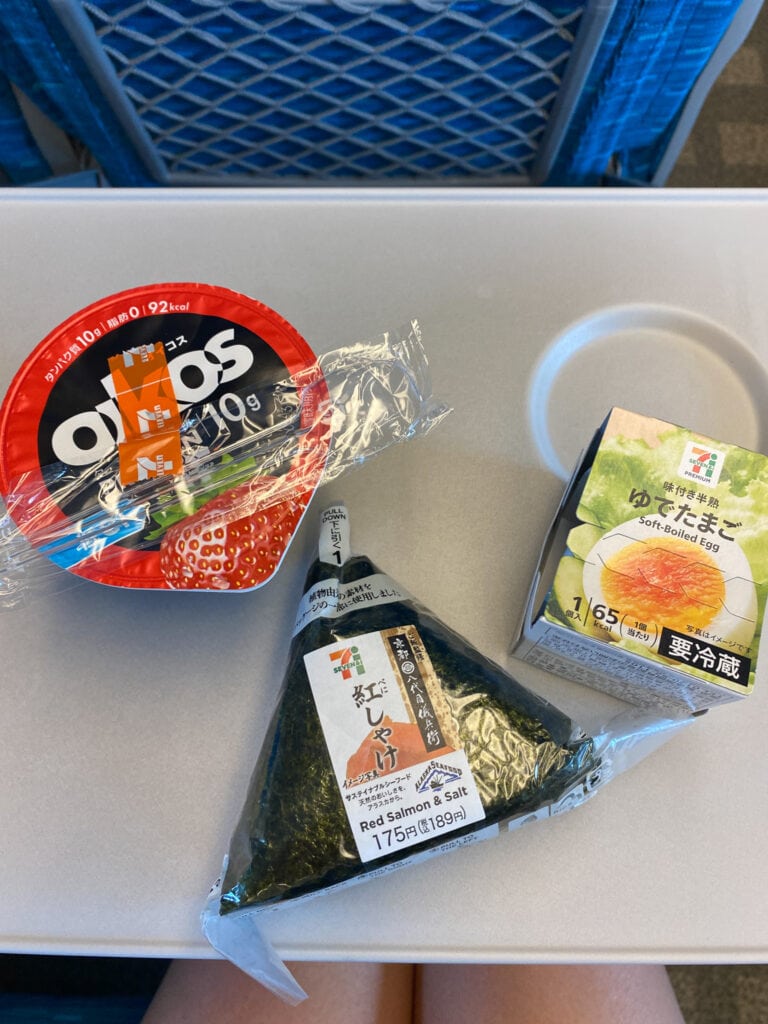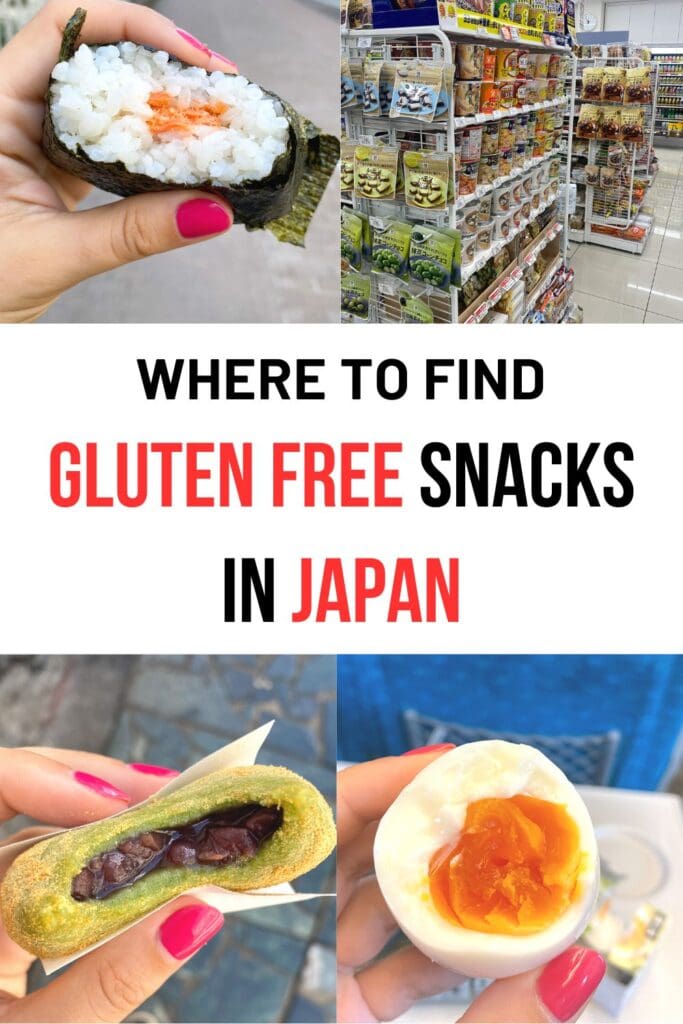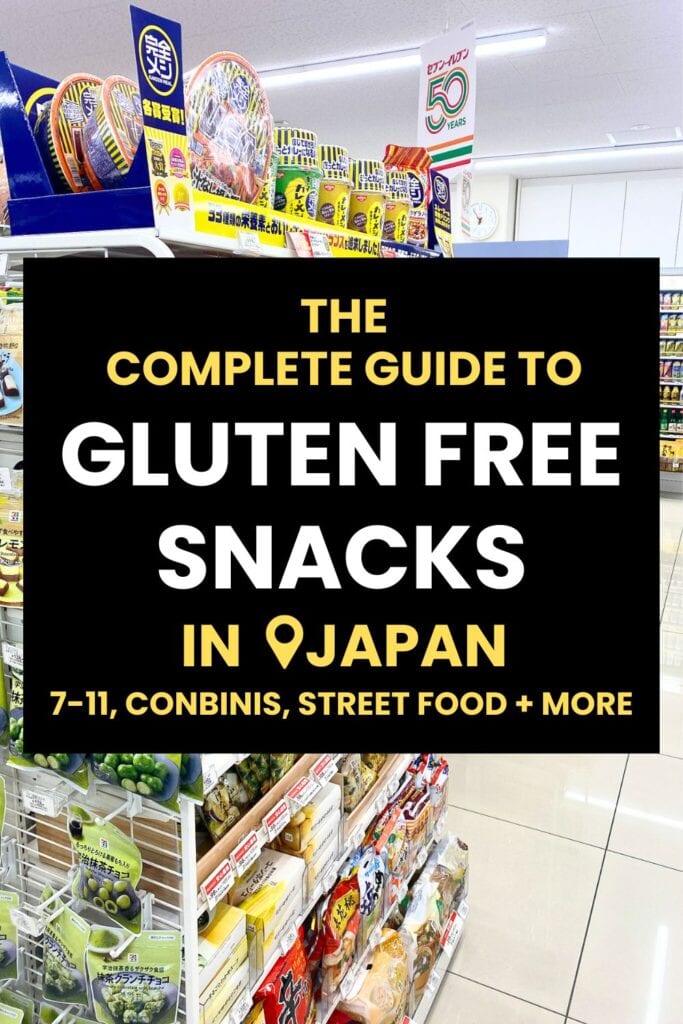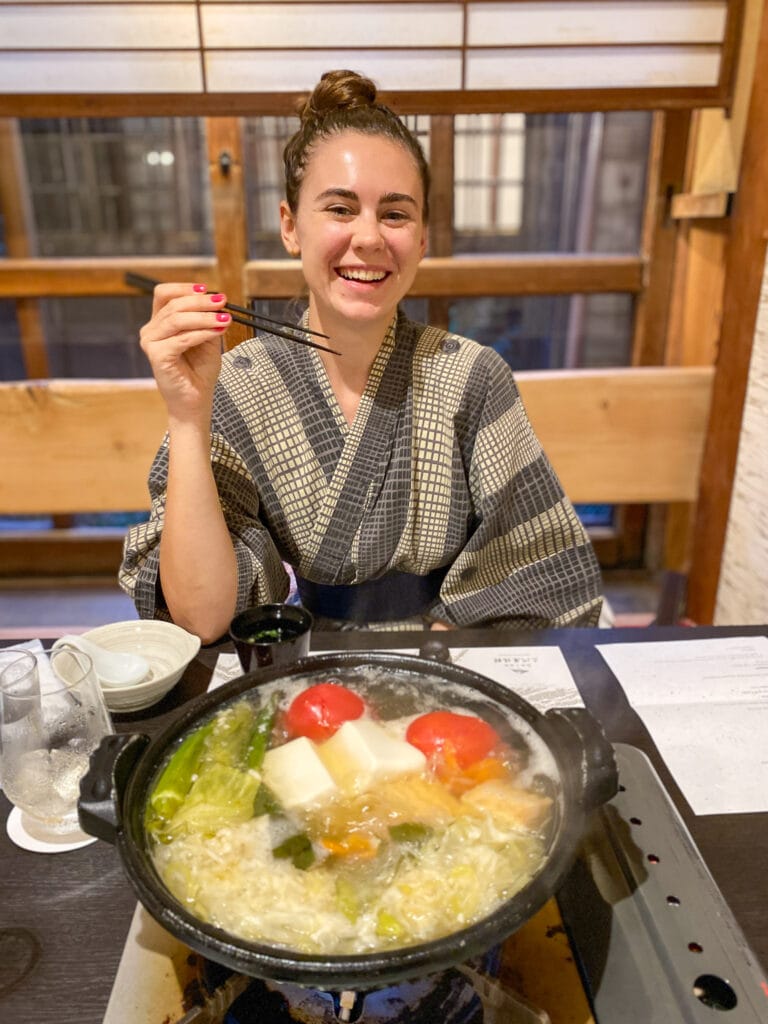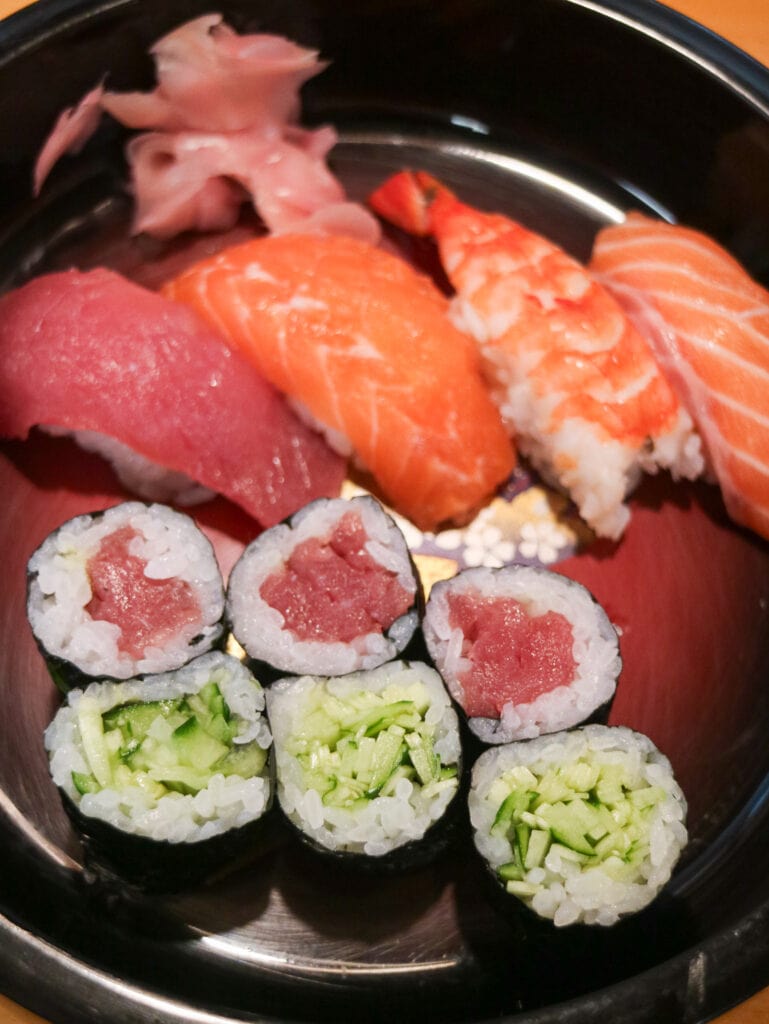A Guide to Gluten Free Japanese Snacks: 7-11, Conbinis, and More
The most requested question after my trip to Japan has been how to find gluten free Japanese snacks at 7-11 and other convenience stores (called “conbinis” in Japan). There is so much information to share that I decided to write a whole article about how to find gluten free snacks in Japan!
Look, it’s not easy being gluten free in Japan (although I’d argue that the struggle is worth it – I ate some of the best food of my life in Japan). Knowing how to find safe gluten free food at convenience stores and markets is going to make your trip way easier.
Below I am sharing everything you need to know about eating gluten free on-the-go in Japan. Let’s get into it!
RELATED | The Ultimate Gluten Free Japan Guide
Gluten Free Japanese Snacks: An Introduction
In this article, I teach you how to find safe gluten free snacks all across Japan. This includes:
- My top 3 translation tools
- Label reading tips for identifying allergens
- Gluten free options at conbinis (7-11, etc.)
- How to find gluten free food at street food markets
- Gluten free bento boxes for train rides
There are a number of situations that a gluten free traveler in Japan will need to find a safe snack. Based on my month in Japan, here are the times I most needed a snack:
- Breakfast: Most restaurants in Japan don’t open until 11am or later, and hotel breakfasts are rarely celiac safe. 7-11 and other conbinis will be your go-to gluten free breakfast.
- Train rides: Who doesn’t love a Japanese bullet train? I frequently stocked up on a gluten free feast from 7-11 before a train journey, so I didn’t feel left out by other travelers’ bento boxes. (I am also sharing gluten free bento box options at the bottom of this post!)
- Meal replacements: There’s nothing wrong with having your entire lunch or dinner from 7-11 if needed. I did this a number of times when a gluten free restaurant was suddenly closed, or couldn’t accommodate me. It’s important to have a safe back up option!
- Markets: Food is a huge part of Japanese culture and this includes markets like Tsukiji Fish Market (Tokyo), Kuromon Ichiba Market (Osaka), and Nishiki Market (Kyoto). In this article I teach you how to find safe gluten free options at markets.
Without further ado, here is my full guide to finding gluten free snacks in Japan!
Gluten Free Snacks in Japan
Let’s start out with a quick list of gluten free snacks you can find in Japan. Please note that many of the items below are NOT ALWAYS gluten free.
You will have to check ingredient lists, ask questions, and avoid certain brands and flavors to ensure they are gluten free. Don’t worry, I will discuss this all in depth further down this article!
Gluten free Japanese snacks include:
- Onigiri
- Mochi
- Daifuku (filled mochi)
- Dango
- Kakigori (shaved ice)
- Sweet potato
- Yogurt
- Ice cream
- Boiled eggs
- Strawberries (fresh or candy-covered)
- Fresh seafood
- Matcha tea
- Wagyu beef sticks
- And more…
Now let’s talk about how to tell if a food is actually gluten free or not.
Tools for Reading Labels in Japan as a Celiac
Obviously, the language barrier is a big deal if you’re a gluten free traveler in Japan. Below are three methods I used to help communicate in Japan, and the situations each tool is best for!
NOTE | Scroll further down this article for a list of possible gluten ingredients on Japanese food labels.
1. Google Translate Image-to-Text
If you want to find gluten free food at conbinis, then Google Translate is your friend. Specifically, the image-to-text feature.
If you’ve never used it, this is how it works!
How to Use Google Translate Image-to-Text
Download the Google Translate app, if you don’t already have it. Then, download the Japanese language. Once that’s done, you can use the app without wifi.
Click the “camera” button in the bottom right corner. Be sure it is set to Japanese → English.
Point the camera at the ingredient label you want to translate. Then, take the photo. After processing, a translation will appear with the English equivalent to the Japanese characters!
WARNING | As useful as Google Translate image-to-text is, it’s not always accurate. But, it is certainly better than nothing. You may want to take a couple photos to be sure it got everything and that the translation stays consistent.
2. Japanese Gluten Free Card
If you are gluten free and traveling to Japan, then buy this Japanese gluten free translation card.
Nope, not another card. That card.
Why I love this card:
- Professionally translated twice.
- Created by a celiac traveler who visited Japan.
- It’s not just a list of ingredients; it goes in depth on gluten sources within Japanese cuisine.
- Discusses cross contact, in the context of popular Japanese foods.
I used this card every single day of my month in Japan, and it is truly the best money I spent. I have used a lot of gluten free translation cards over the years but none were as well received as this one.
How will a gluten free translation card help you find snacks in Japan? Well, it won’t be too useful at conbinis. But it will be indispensable at markets, street food stalls, tea houses, and restaurants.
Buy your Japanese GF card here.
3. Gluten Free Tours Japan: The Safest Option
My final recommendation is the most expensive but will keep you the safest: Gluten Free Tours Japan.
This is a company that provides a gluten free meal consulting service for travelers in Japan. We used them for one week of our month-long trip to Japan, and I’ve never had another experience like it.
How GFTJ Helped at Conbinis
In terms of finding gluten free snacks in Japan, they were extremely helpful.
Basically, I would text them when I was heading over to a 7-11 or other convenience store. Once I was there, I’d send them photos of various snacks and their ingredient labels.
Hiroshi, who is fluent in Japanese, would then read the labels and reply to me either safe, not safe, or cross contact.
This whole interaction was fast, easy, and less risky than using Google Translate, which can sometimes mistranslate or miss words entirely.
How GFTJ Helped at Markets
They were also incredibly useful for navigating markets as a celiac.
I would actually call Hiroshi on Whatsapp, and then pass my phone over so he could discuss gluten free food on my behalf in Japanese.
It was amazing and took such a huge burden / anxiety off my shoulders.
Read my honest review of Gluten Free Tours Japan here.
Japanese Label Reading: Allergens to Avoid if You’re Gluten Free
A quick note on how to actually identify gluten on a Japanese label, once it’s been translated to English. Watch out for these particular ingredients that are common in Japan.
Gluten-containing ingredients on Japanese food labels:
- Wheat – 小麦
- Barley
- Malt
- Rye
- Grain vinegar (as opposed to rice vinegar; this can contain barley malt)
- Soy sauce
- Mizuame (a syrup sometimes made from barley)
- Miso (sometimes contains barley, so if the label doesn’t specify and just says “miso,” it’s best to avoid)
- Seitan (pure wheat gluten – ahhh!!)
- Oats
Regarding allergen statements, wheat is an official allergen in Japan and it’s legally required to be declared on labels (source).
Unfortunately, barley/malt and other gluten-containing ingredients are not considered official allergens. That means, you have to be super careful when reading labels, and don’t just rely on an allergen statement.
Gluten Free Options at 7-11 and Other Japanese Conbinis (Convenience Stores)
Convenience stores (called “conbinis”) are iconic in Japan. Every traveler seems to be obsessed with them. And yes, they are pretty great.
Popular conbinis include 7-11, Family Mart, and Lawson’s.
Below I will share some of the gluten free snacks that I bought from conbinis in Japan.
PLEASE ALWAYS DOUBLE CHECK THE INGREDIENT LABEL! The safest way to do this is with the help of Hiroshi from Gluten Free Tours Japan; alternatively, use Google Translate with care.
Ingredient formulations can change frequently in Japan so something that was gluten free during my time in Japan may not be gluten free during yours. This also isn’t an exhaustive list – there are more gluten free snacks than those I’ve listed below.
Onigiri
Ahhh, onigiri… my lifeline in Japan! This was my #1 gluten free snack in Japan. Onigiri is basically a seaweed-wrapped rice ball, filled with various substances.
I spent one of my first days in Tokyo at a Family Mart and 7-11 Google Translate-ing the ingredients on every type of onigiri. The only gluten free flavors at the time of my visit were:
- Salmon (Family Mart)
- Red salmon & salt (7-11; this was my personal favorite)
- Pickled plum (both 7-11 and Family Mart)
I have seen posts from other gluten free travelers mentioning other flavors so be sure to check the labels when you visit.
NOTE | The tuna mayo onigiri is not gluten free, despite sounding like it might be. Kewpie mayonnaise (the most common brand in Japan) contains barley.
Oikos Yogurt
Oikos brand greek yogurt was a go-to for me in Japan.
Haagen Dazs Ice Cream
A classic! Conbinis sell tiny containers of Haagen Dazs and will give you a small spoon when you check out. Note that not all flavors are GF!
Chocolate
Some chocolate bars were gluten free and others had cross contact warnings, so always check the label.
Boiled Eggs
7-11 and Family Mart both sell packaged boiled eggs in varying consistencies (you can get a soft boiled, hard boiled, etc.). These are usually gluten free but beware any that are marinated in soy sauce.
Calbee’s Potato Sticks
Crunchy potato sticks sold in small tubs. When I visited Japan, the red, green, and blue ones were all GF – as in no gluten ingredients listed on the label and no cross contact warning. I ate them to no ill effect. Not all flavors are GF.
SOYJOY Bar
SOYJOY bars are a soy-flour based granola bar and they actually say “gluten free” on the label. Good to stock up on these and keep a few with you for when hanger strikes!
Meat and Cheese
A few times I got prosciutto and swiss cheese; this was gluten free per the labels. Many other meats that looked like they would be gluten free listed wheat on the label so (again) be sure to check.
Yuzu Lemonade (7-11 Only)
Dan and I both got obsessed with the yuzu-flavored sparkling lemonade drink, sold only at 7-11. We drank so many of these that one of us would be like “want a yooz?” and the other actually knew what we meant haha.
Sweet Potato
A lot of people told me about the heat-your-own sweet potatoes sold at conbinis in Japan, and I swear I looked everywhere for them and never saw them! We visited in summer so maybe they’re seasonal? In any case, these should be gluten free if you find them.
Conbini Items That Are Not Gluten Free
To be honest, the majority of items at conbinis are not going to be gluten free. Always check labels!
The following items almost always contained gluten:
- Pre-made salads (due to dressing)
- Pickles
- Potato chips (cross contact warnings)
- Sushi
- Barley teas (ALWAYS check tea labels!!)
- Anything containing mayo
Gluten Free Japanese Street Food
Japan has some amazing food markets, but as you can imagine these can be somewhat nightmare-ish for gluten free folks with so much soy sauce and tempura flying around.
In the name of professional “research” for this blog, I went to all three main food markets in Japan and these are my thoughts:
- Tsukiji Fish Market (Tokyo): Possible to eat gluten free here but I was disappointed in the lack of GF sushi and seafood options. Read my full GF Tsukiji guide here.
- Kuromon Ichiba Market (Osaka): Best market for gluten free food. We used Gluten Free Tours Japan for 3 hours exploring here and it was incredible; notably they also helped me avoid some possible glutenings at places that I thought would’ve been GF safe.
- Nishiki Market (Kyoto): Worst market by far for gluten free options. Tons of fried food; I wasn’t able to eat anything at all.
The best strategies for finding gluten free food at markets in Japan is to:
- Identify the stalls and dishes that are most likely to be safe (more info on this below!).
- Show your gluten free translation card to the stall owner, and use Google Translate to supplement with specific questions.
- Alternatively, hire Gluten Free Tours Japan and have Hiroshi talk on the phone in Japanese to the stall owners on your behalf (safest option!).
Japanese Street Food Most Likely to Be Gluten Free
Based on my experience, the food below is what is most likely to be gluten free and worth showing your translation card at. Saying that, I would say I had about a 50% failure rate so just try to be patient and go in without too many expectations (maybe have some 7-11 snacks to tide you over!).
WARNING | Watch out for soy sauce, shared grills, shared spatulas/utensils, anything fried, sushi rice, and any mystery sauces or squeezy bottles.
Mochi
Mochi is a chewy, glutinous rice dumpling and a classic Japanese dessert.
Made the traditional way it should be gluten free, but many manufacturers now add gluten-containing ingredients like mizuame (starch syrup from barley) or flour. There can also be cross contact in production. Always ask.
Daifuku
A type of mochi that is filled – sometimes with whole fruit, red bean paste, custard, etc..
Like plain mochi, it can go either way if it’s gluten free depending on specific ingredients and manufacturing. Always ask.
Dango
Dango is three small balls of mochi skewered on a stick (usually pink, white, and green). This was gluten free every time I asked.
Strawberries
Depending on the time of year, you’ll find everything from fresh strawberries to candied strawberries. The candied ones were gluten free every time I checked.
Kakigori
Kakigori is shaved ice, which is popular in summer (when we visited Japan). This was gluten free every time I asked.
Oysters
One of the safer seafood options because they can be eaten raw, and when grilled the shell protects from cross contact on the grill. Beware of any added sauces.
Matcha
Japanese green tea – should be gluten free unless something is added!
Wagyu Beef
A Japanese specialty! Be very careful of the grill it is cooked on. I had some delicious wagyu beef at Tsukiji Fish Market (specific location is linked in that post).
Sashimi and Sushi
May be gluten free, but certainly not always. For sashimi, confirm that it’s not marinated in soy sauce. For sushi, check that the rice is made with gluten free rice vinegar and NOT grain vinegar.
Gluten Free Bento Boxes in Japan
Finally, let’s talk about gluten free bento boxes in Japan.
Bento boxes are single-portion boxed meals that usually contain rice and a few other dishes in different compartments. They’re beautiful!
They are popular for train journeys, and are sold in most train stations. I checked labels and sadly never found a bento box at a train station that was gluten free.
So, if you still want the bento box experience, you have a couple options:
- DIY your own gluten free “bento box” by picking up snacks from 7-11.
- Order a gluten free bento box from a restaurant that offers them.
I did my research on gluten free bento boxes in Japan and only found a few places that can offer them. Here they are!
Naramachi Vegan Nabi (Nara, Japan)
Naramachi Vegan Nabi is an adorable gluten free, vegan, and nut-free restaurant run by two sisters in Nara, Japan.
They sell gluten free and vegan bento boxes at lunch time, but it is recommended to make a reservation in advance because they frequently sell out.
Dan and I got gluten free bento boxes from here and ate them near Nara Park – highly recommend!
More Options for Gluten Free Bento Boxes in Japan
The only bento box I ate in Japan was the one in Nara. However, I did some research and here is a short list of places that may be able to provide gluten free bento boxes:
- YOU & I TATEMACHI (Hiroshima): Dedicated gluten free bento box shop in Hiroshima. Reservations required two days in advance.
- Michinori Bento (Nagoya): Dedicated gluten free bento box shop in Nagoya. Here is the Google Maps location pin.
- Gen (Kyoto): Vegan and gluten free cafe in Kyoto that sells bento boxes. See their English menu here.
- Ippuku Cafe (Kyoto): An allergy-friendly cafe in Kyoto that sells take out bento boxes (from what I can tell online, they are dedicated GF but please confirm).
If you discover anywhere else to buy gluten free bento boxes in Japan, please leave me a comment below and I will update this post accordingly!
Gluten Free Japanese Snacks: Final Thoughts
Well, there’s my information dump on how to find gluten free snacks in Japan. I learned a LOT as I prepared for my Japan trip and during the time I spent there. My hope is that sharing this information will help make your own trip to Japan easier (and safer).
If I am to leave you with one piece of advice it is to ALWAYS CHECK THE LABEL. Ingredients can change so make your decisions based on what’s in front of you, and not necessarily the products listed in this blog post.
This is not meant to be an exhaustive list of gluten free Japanese snacks, but rather a resource to teach you how to find gluten free food for yourself (or with the help of Gluten Free Tours Japan!).
Happy eating, and let me know in the comments below how you get on in Japan!



